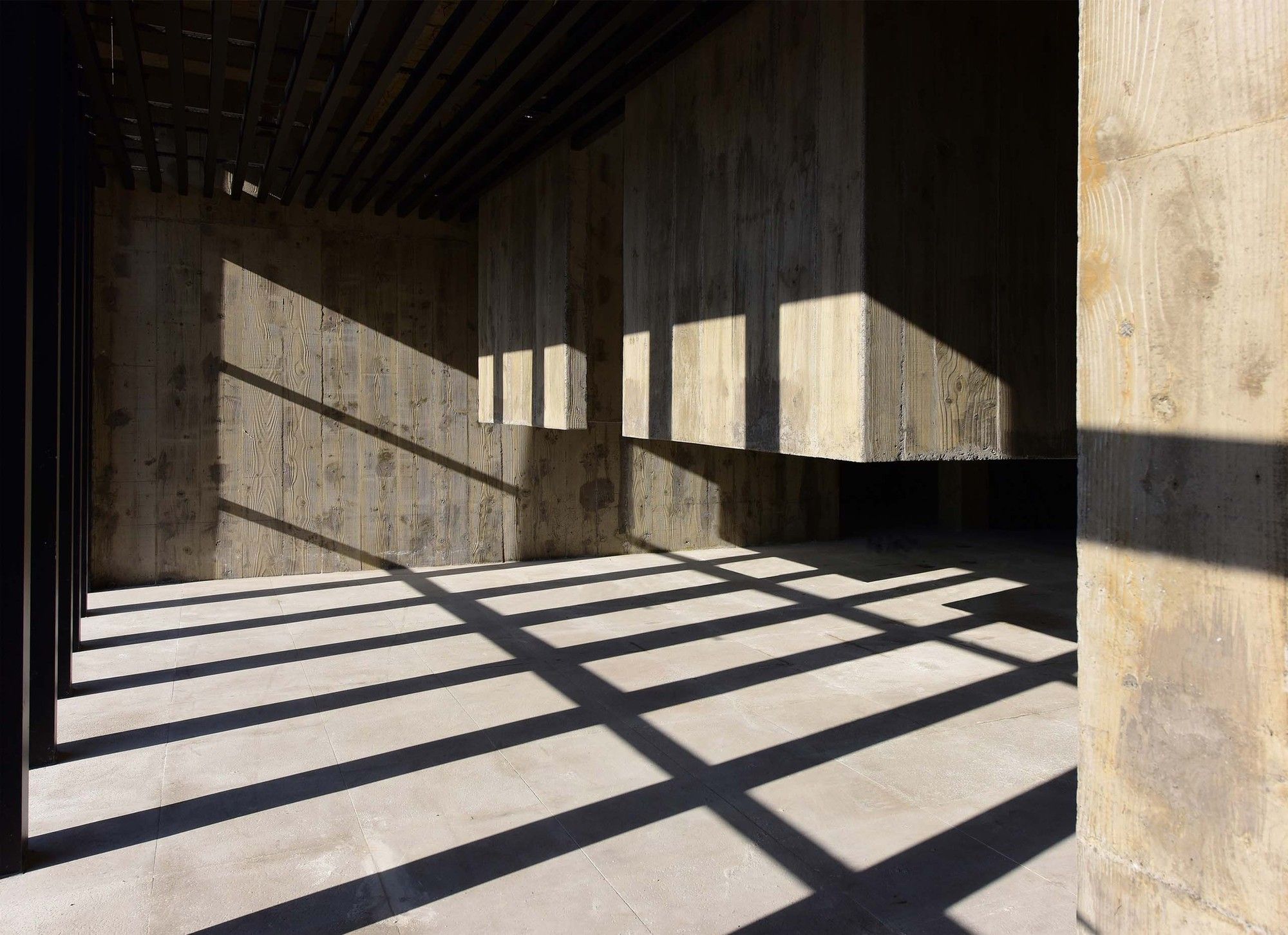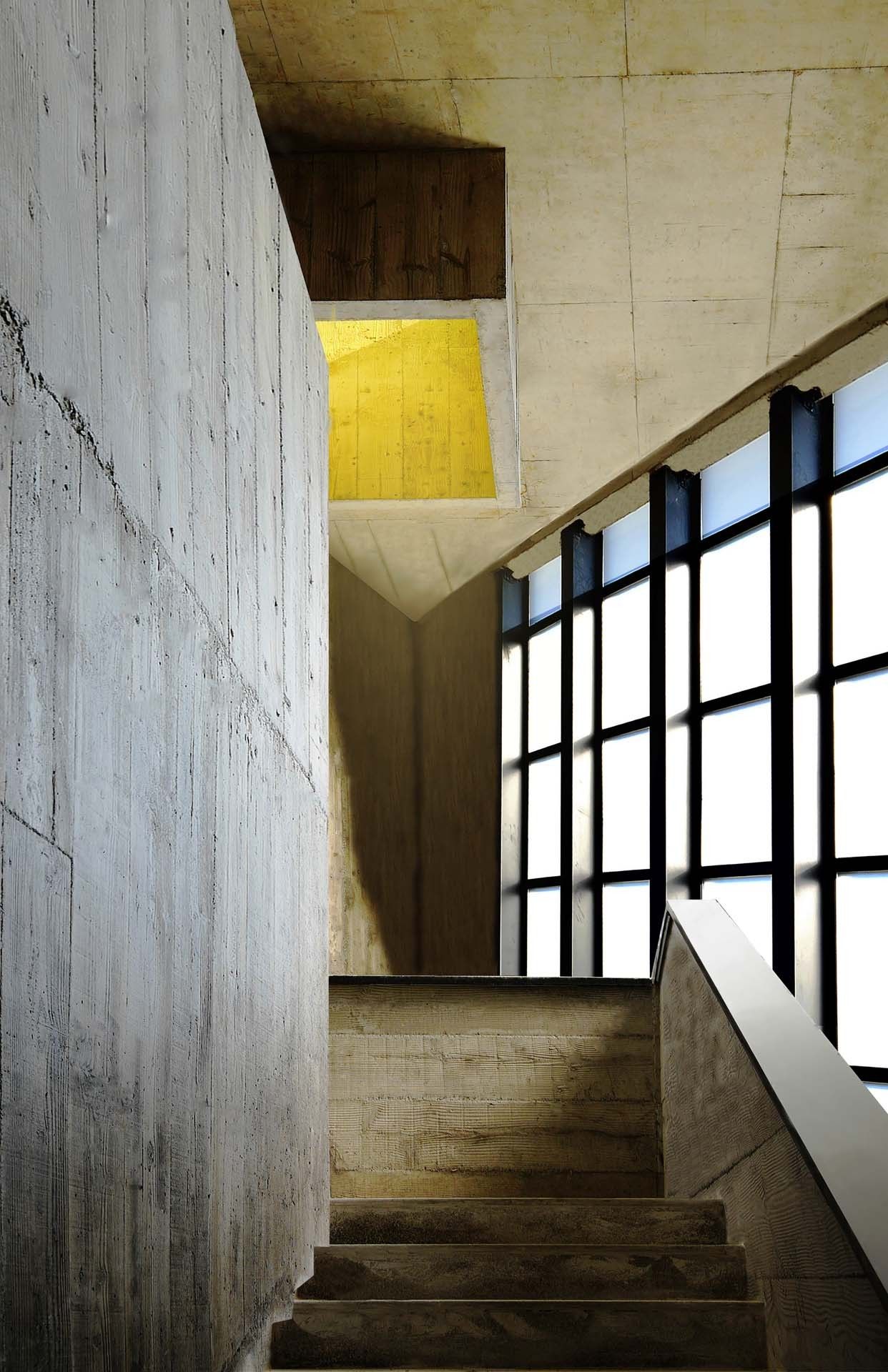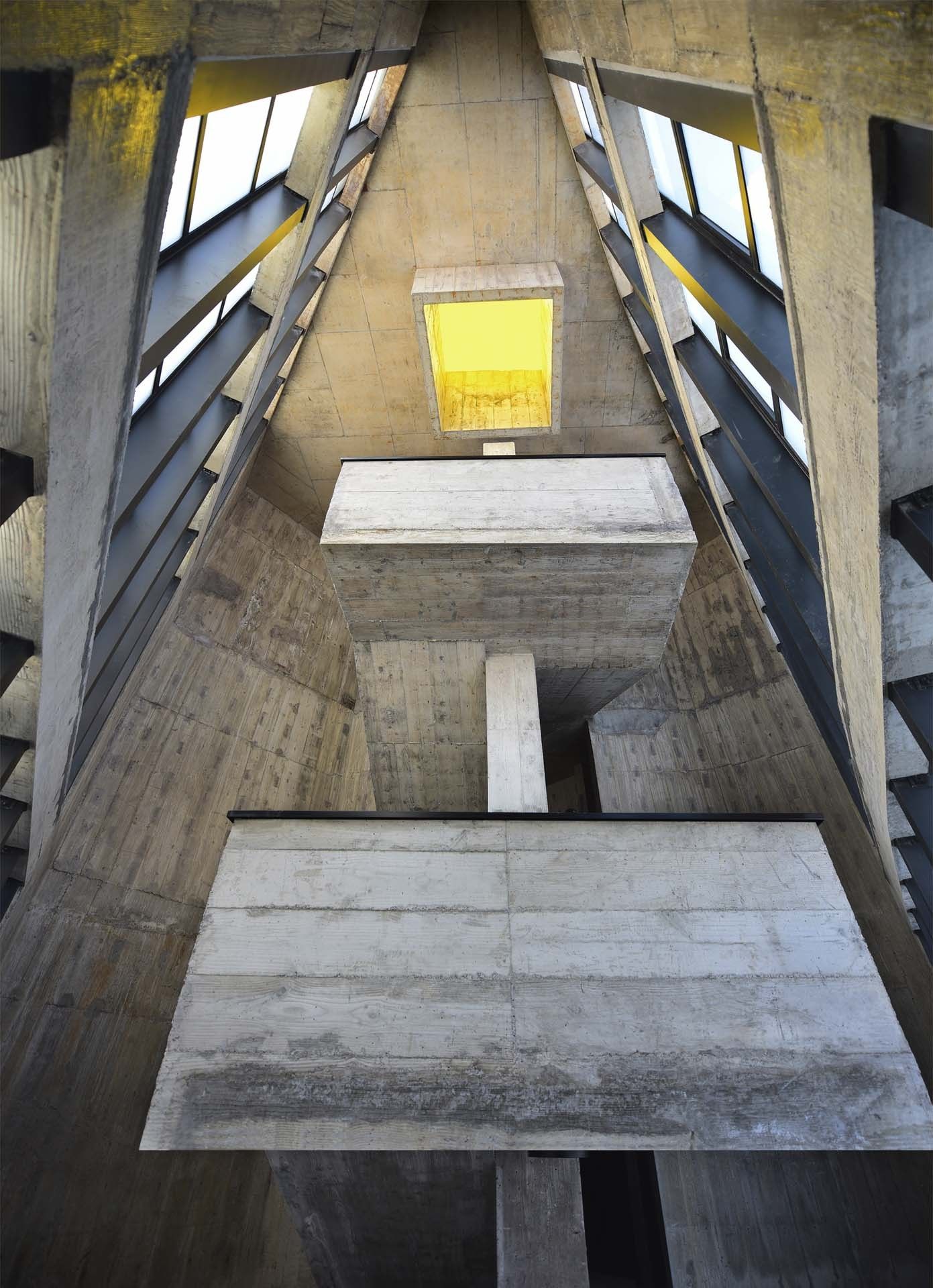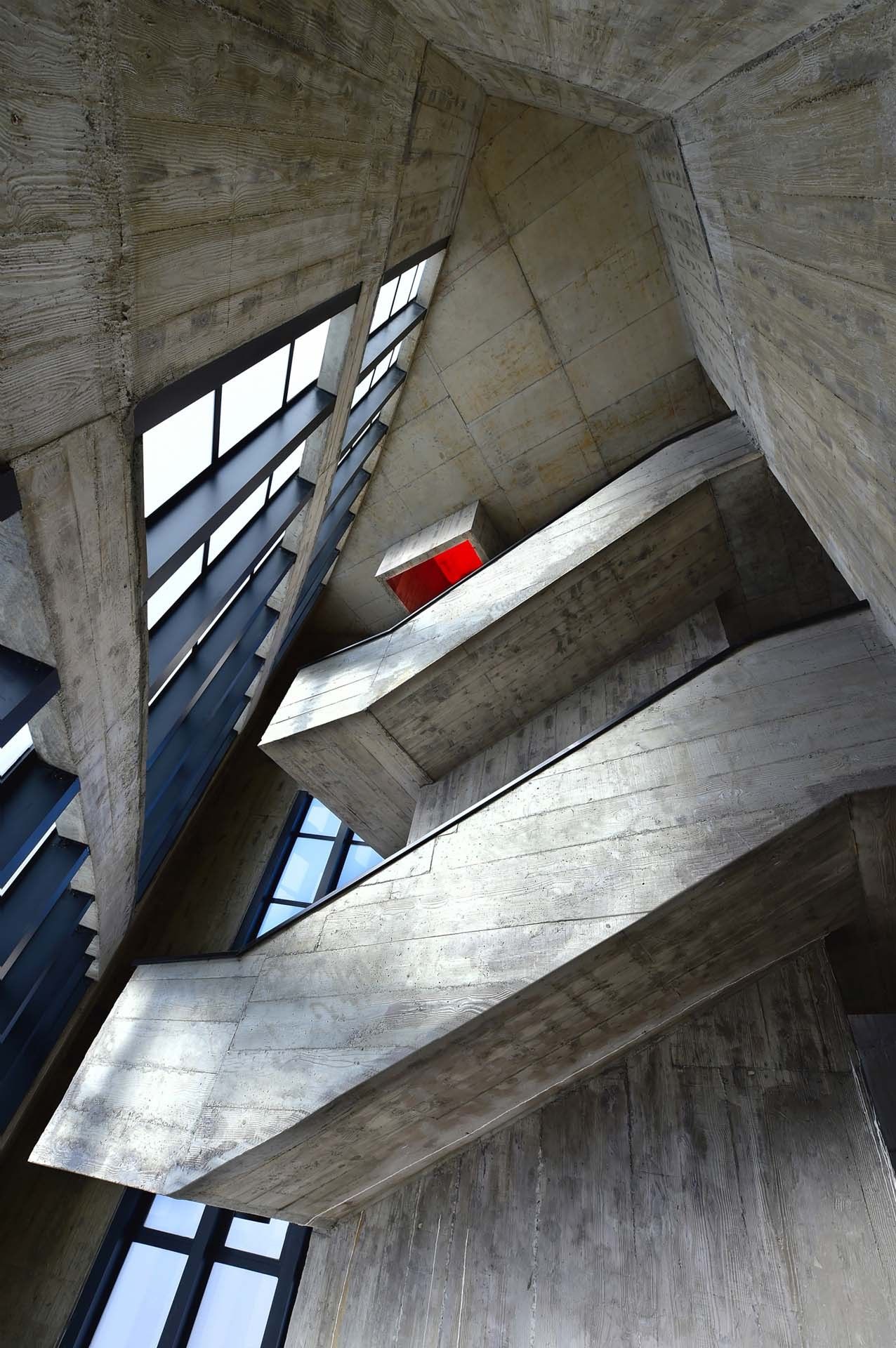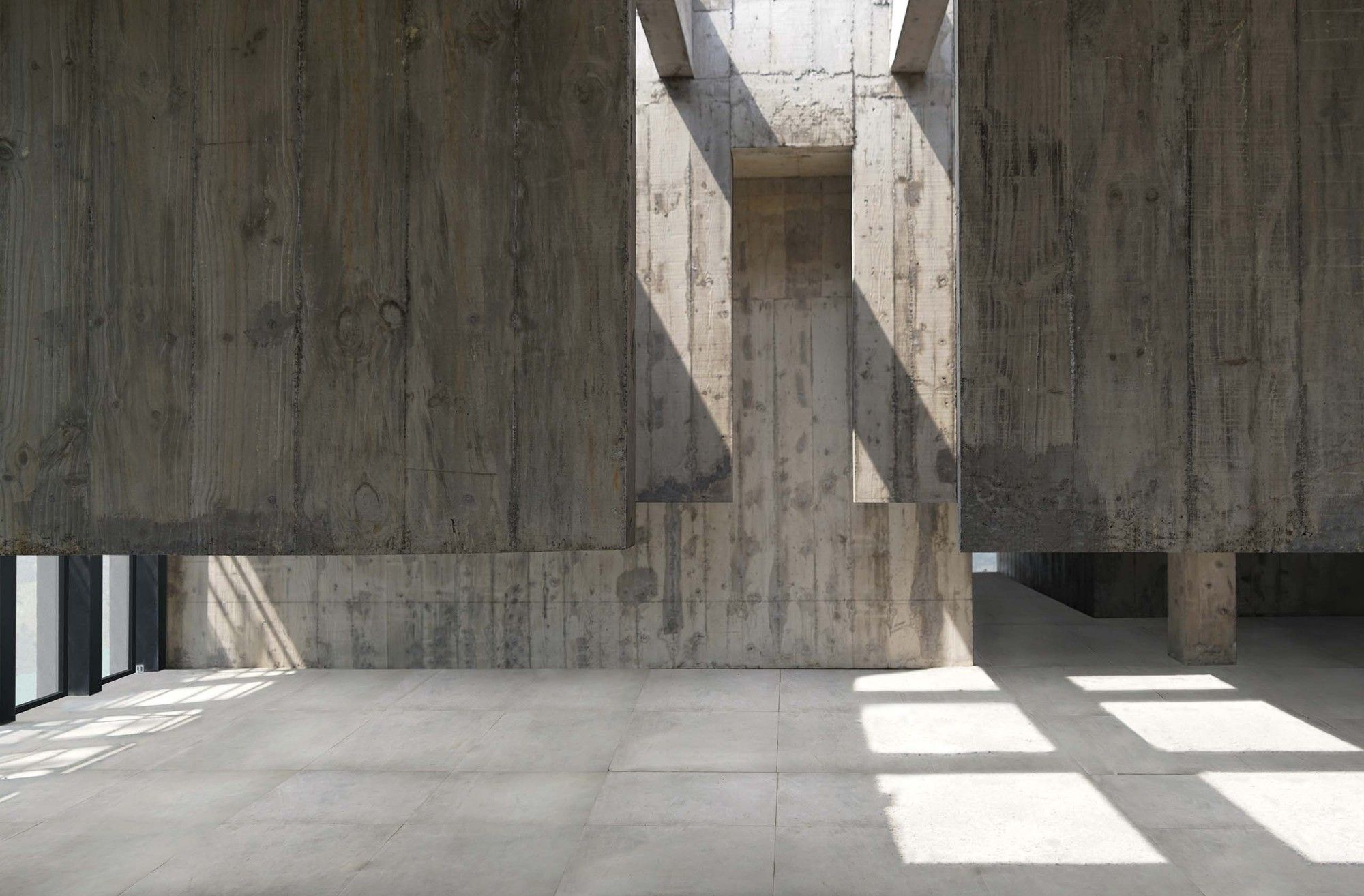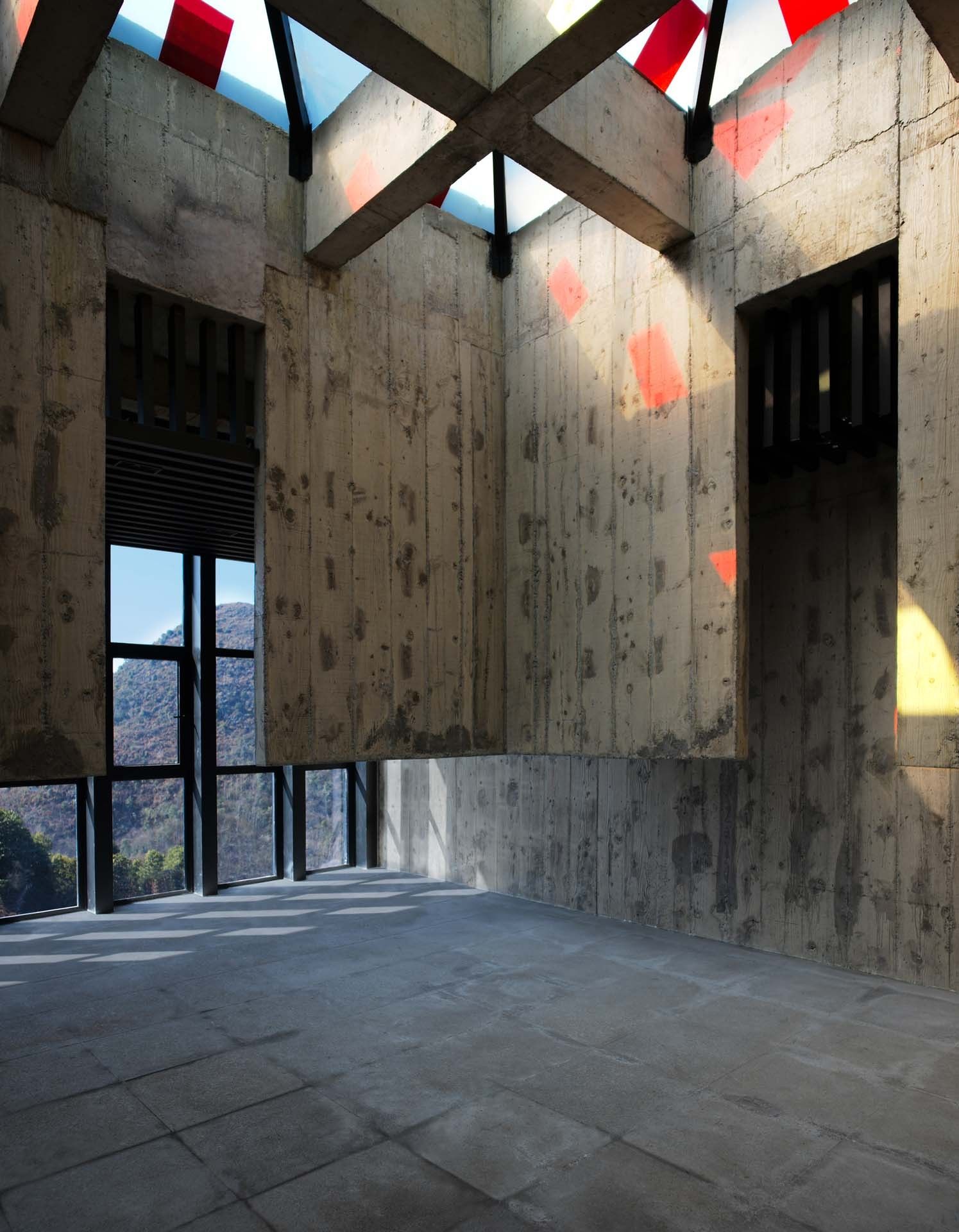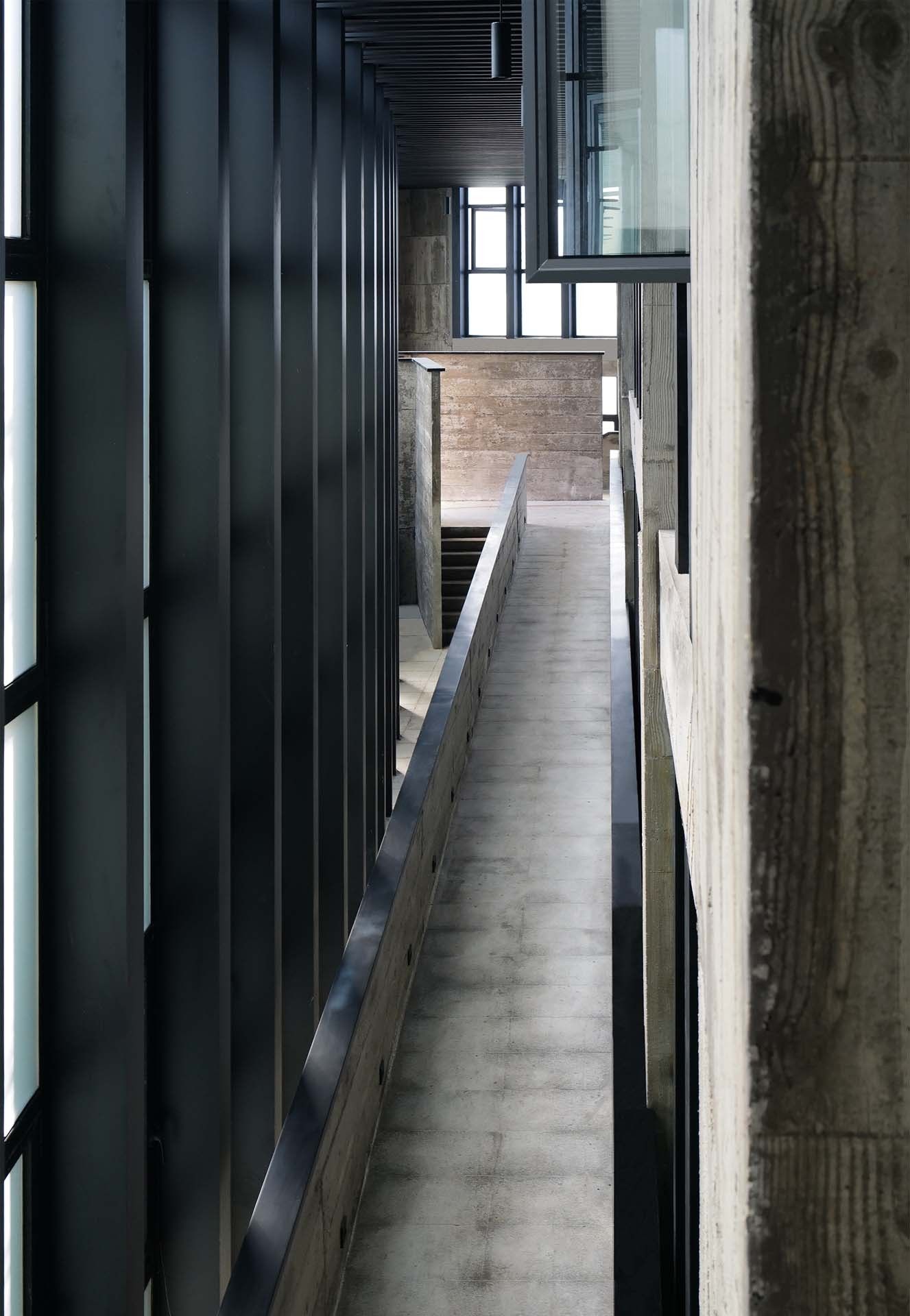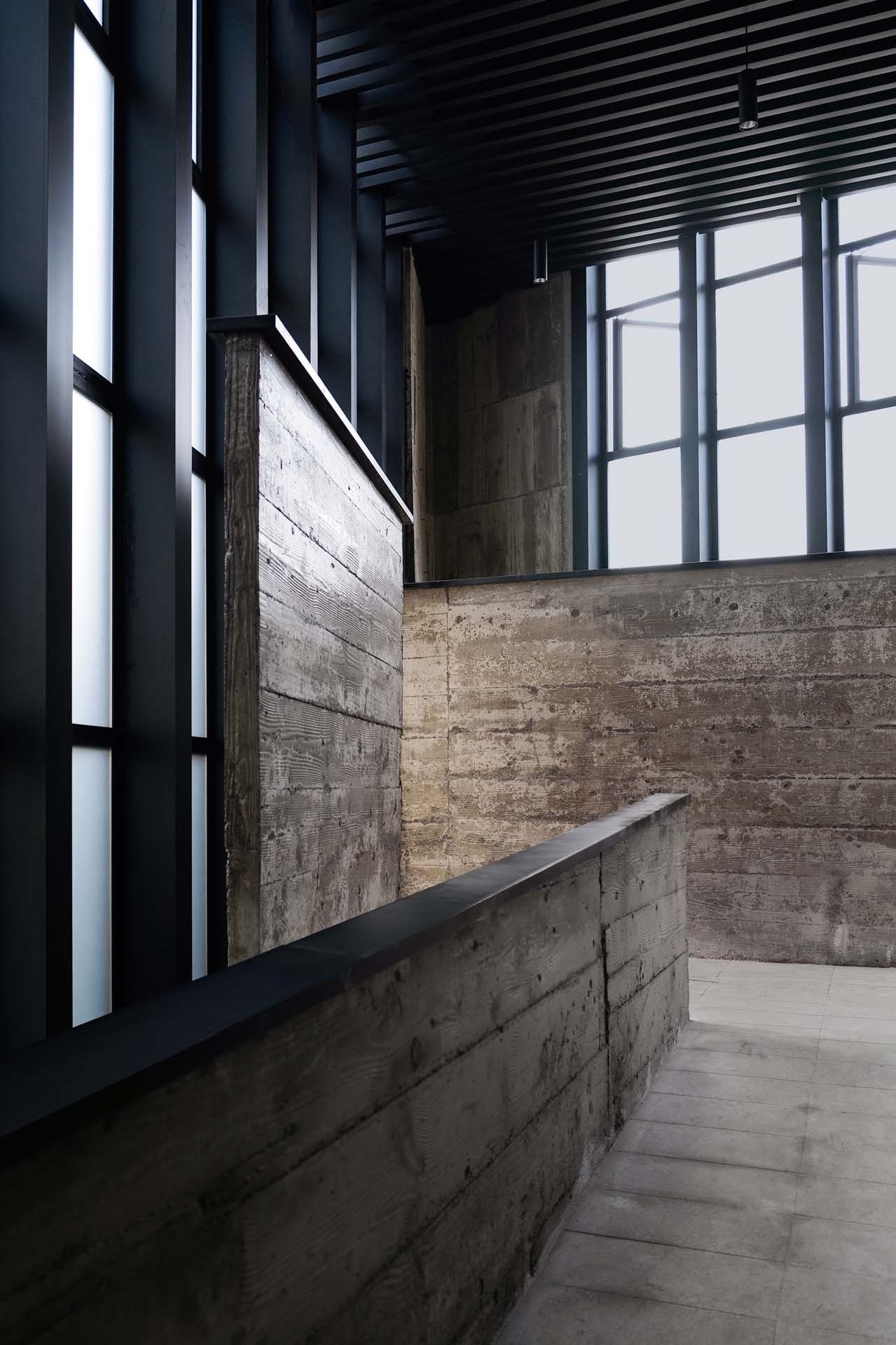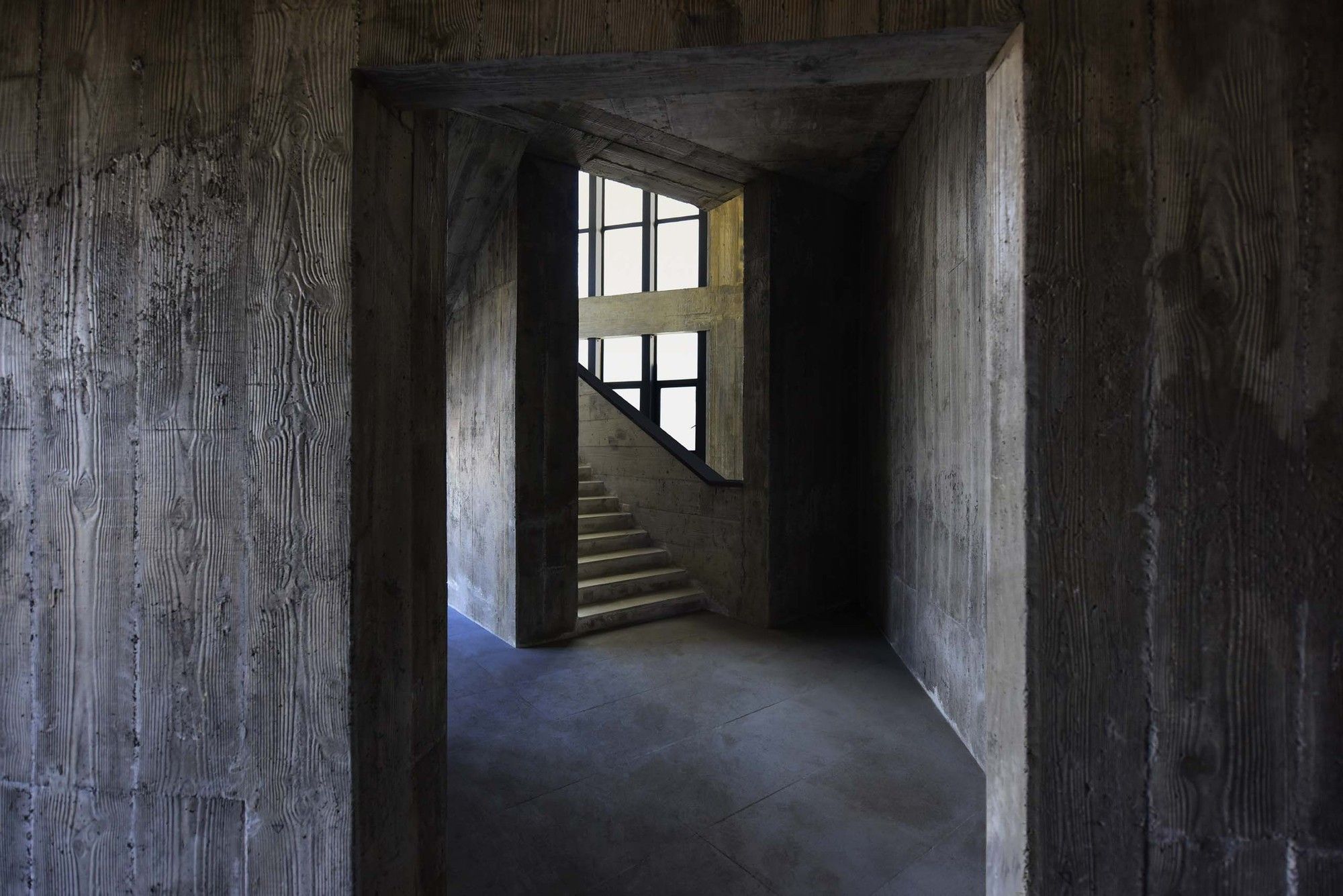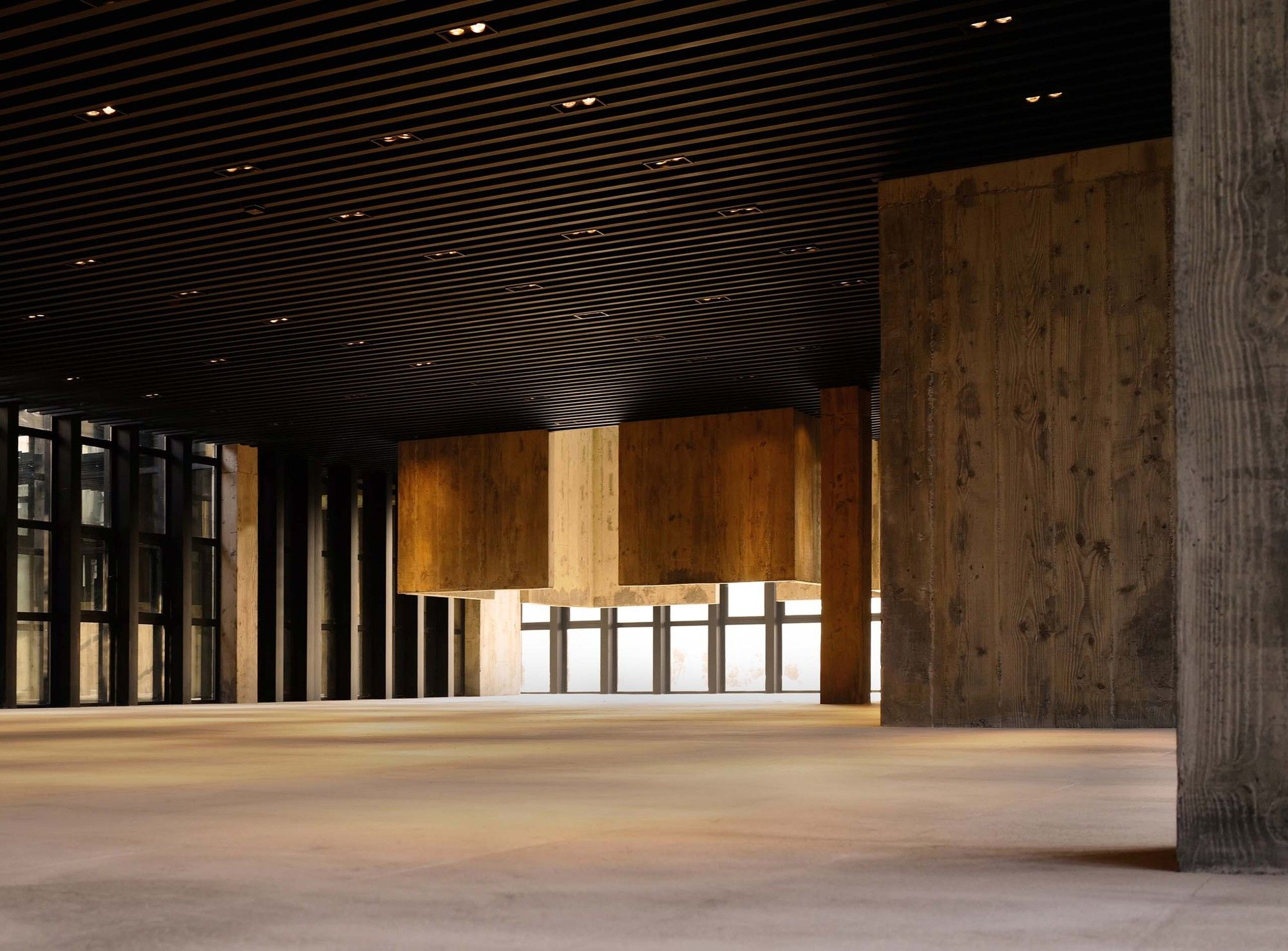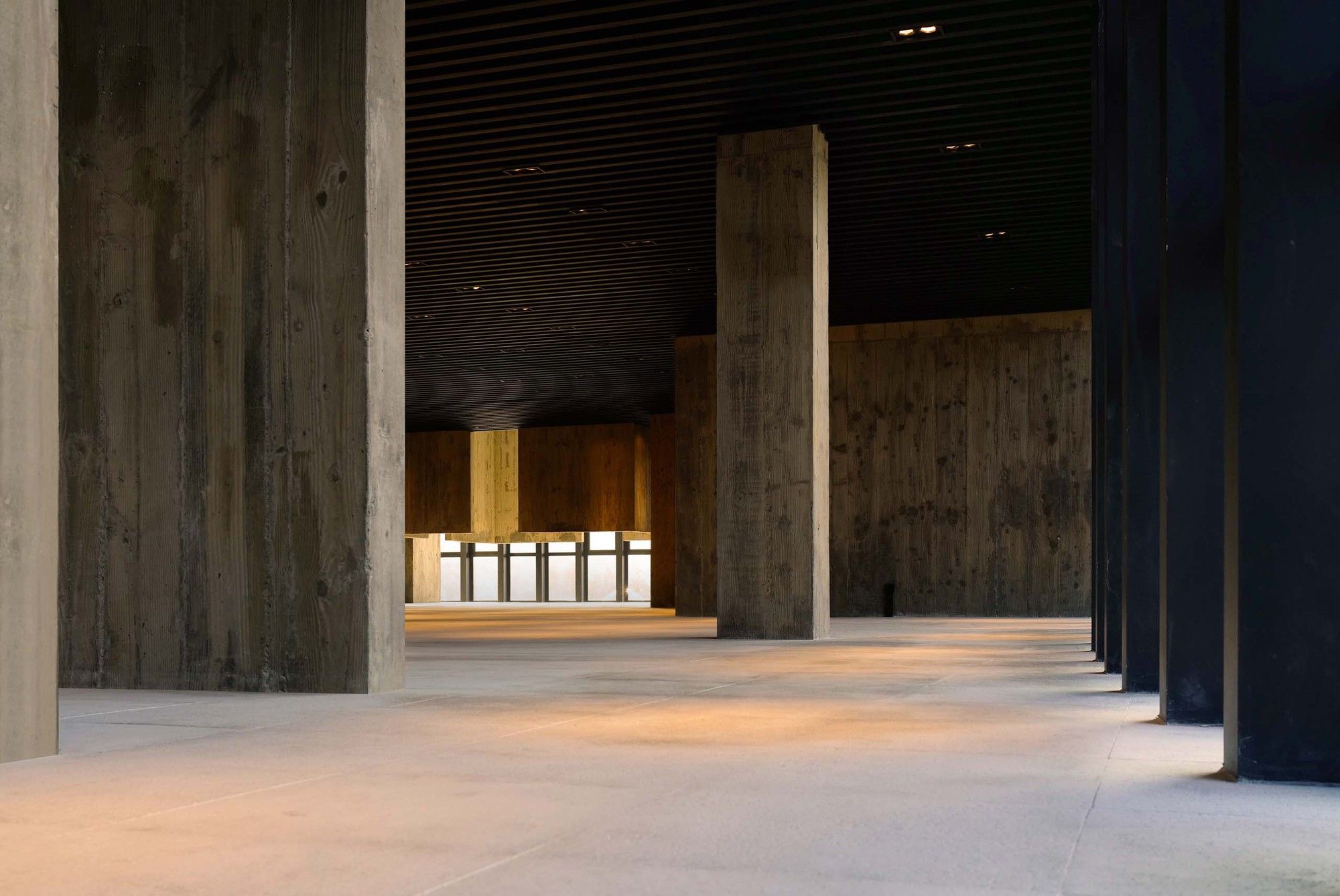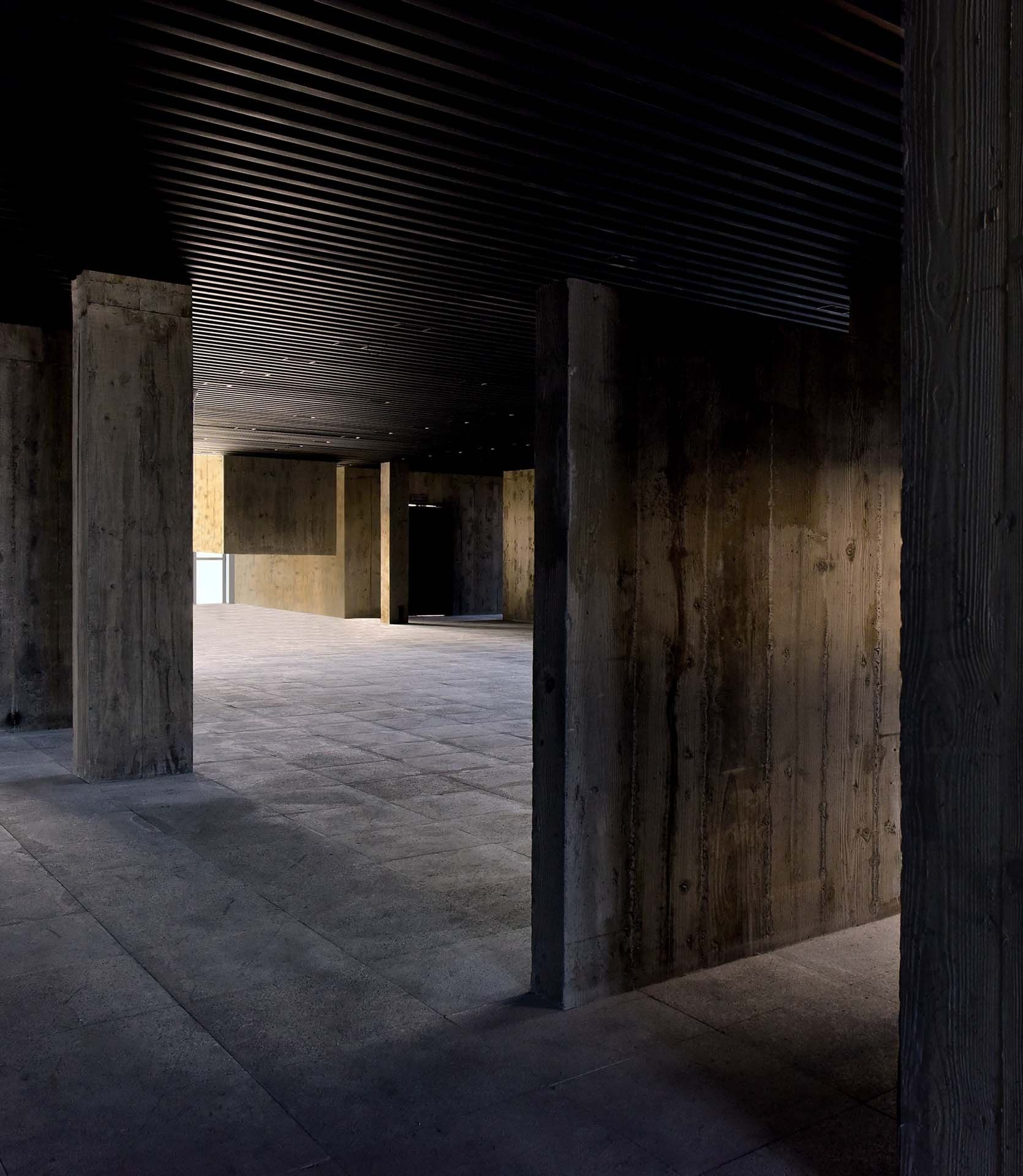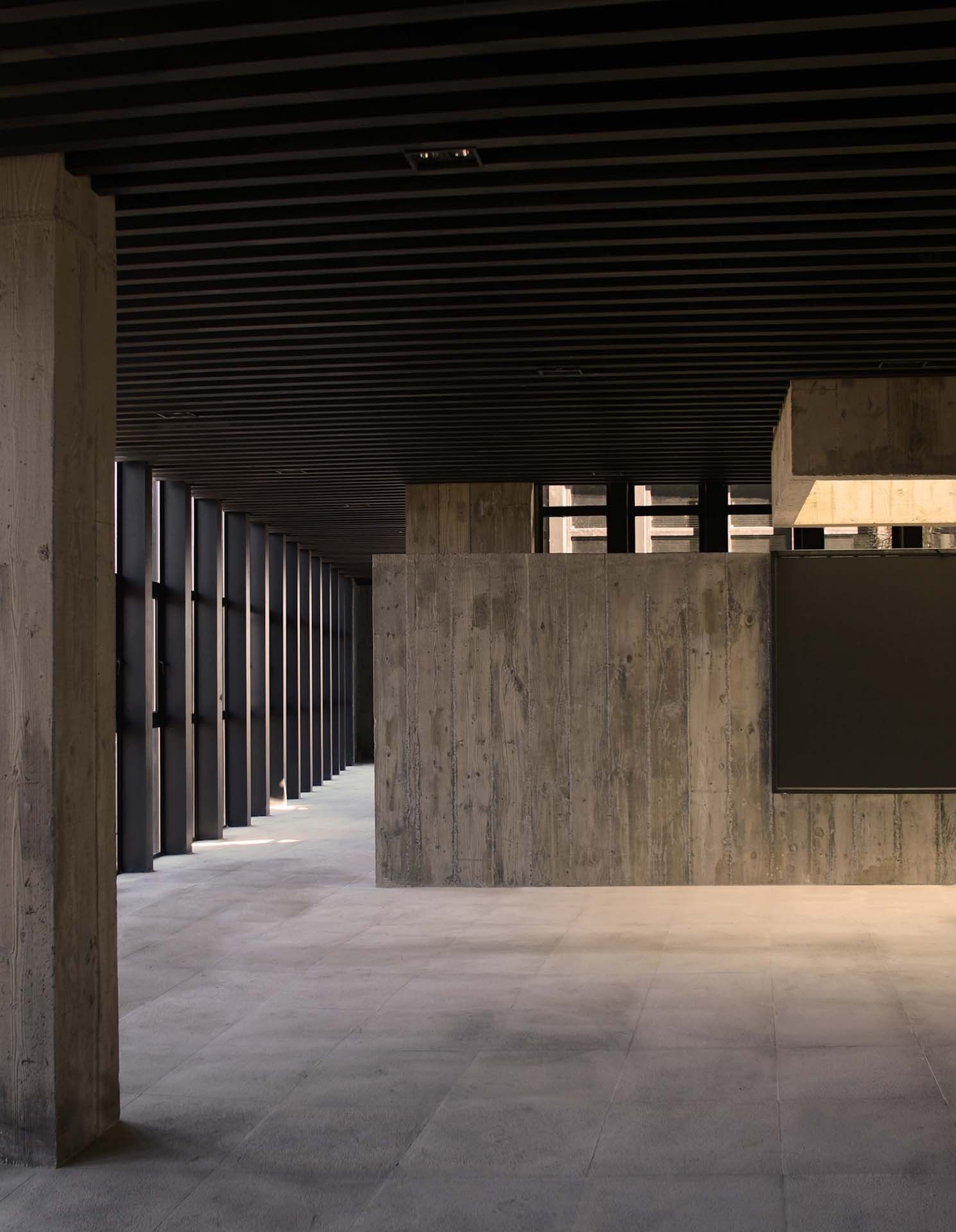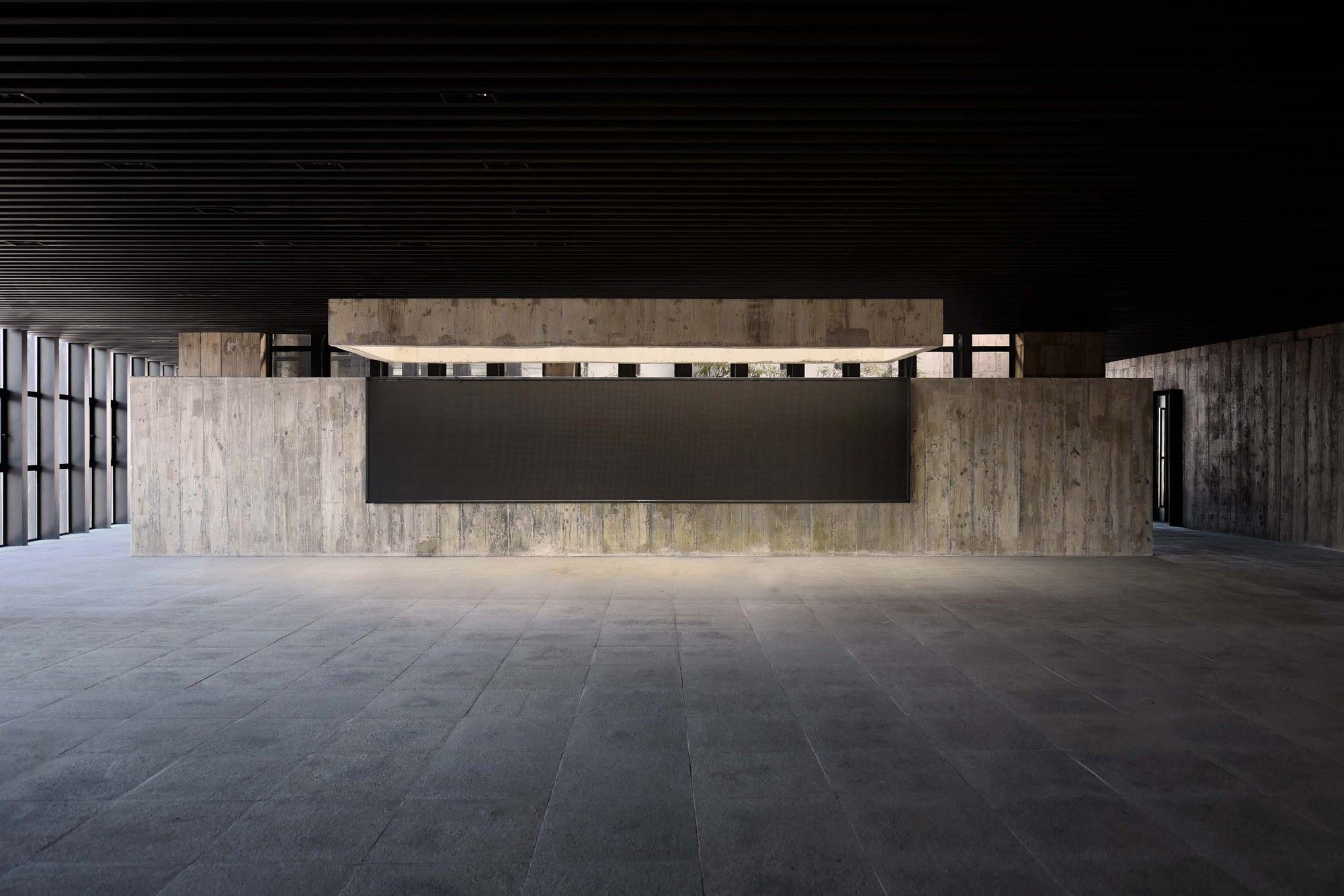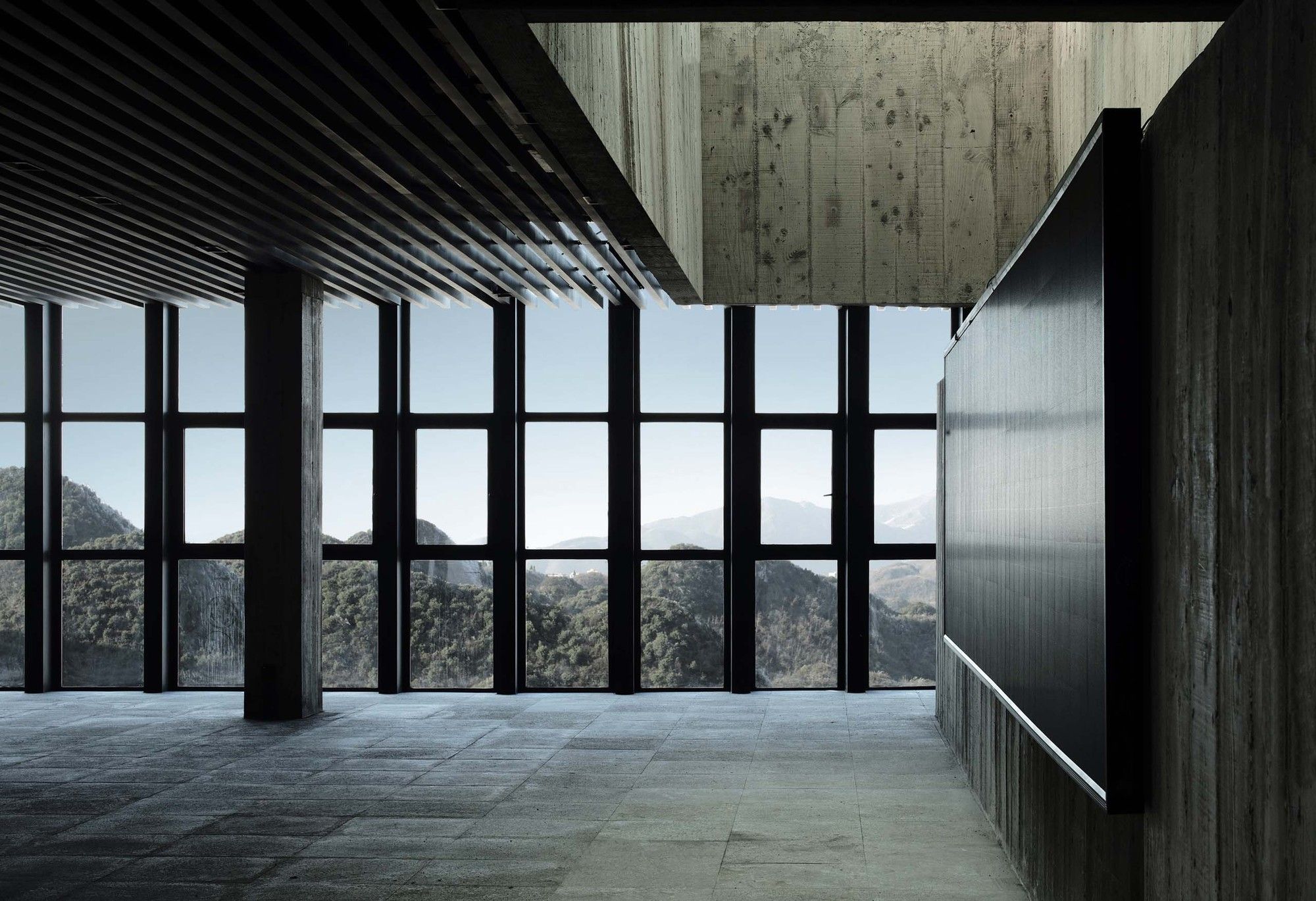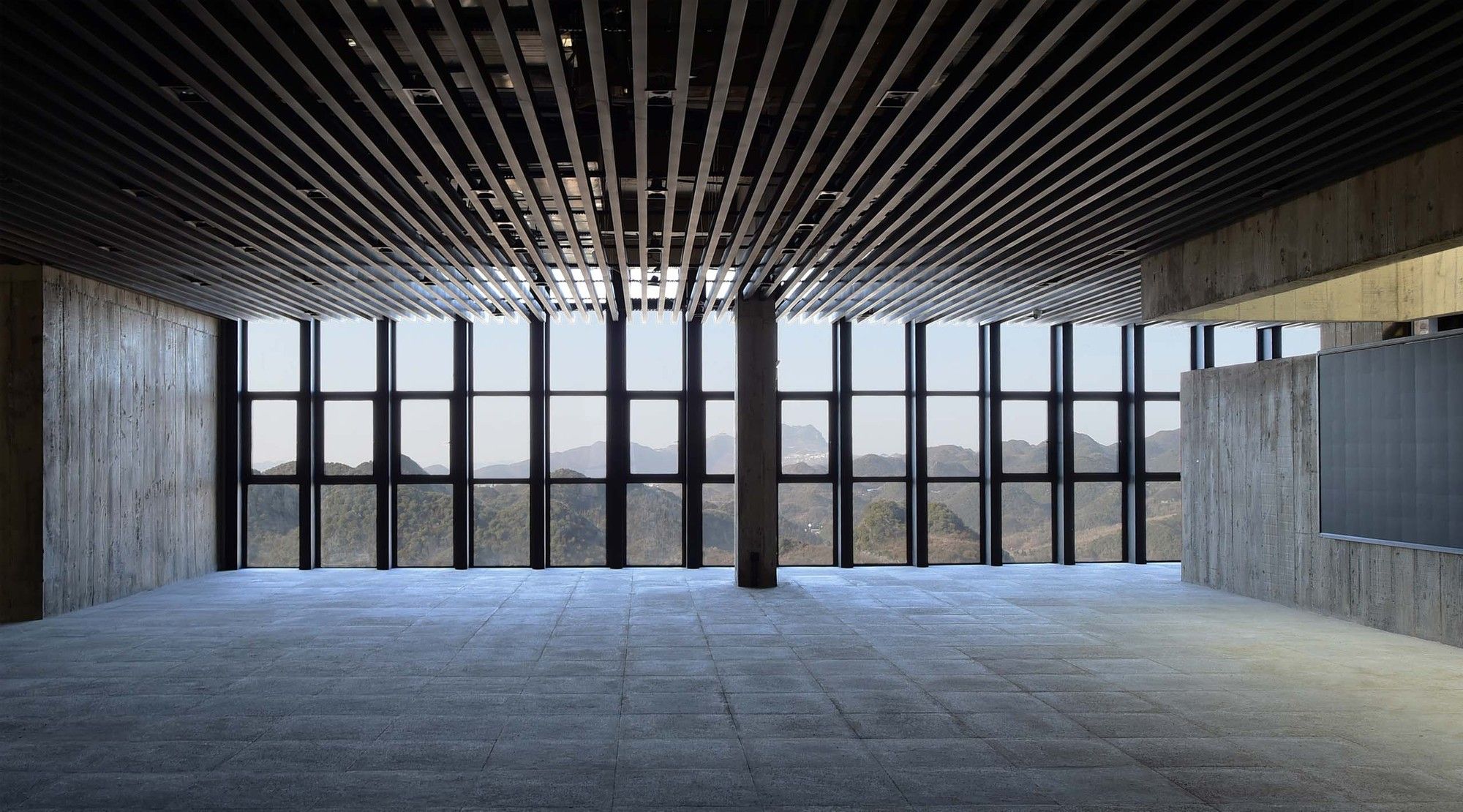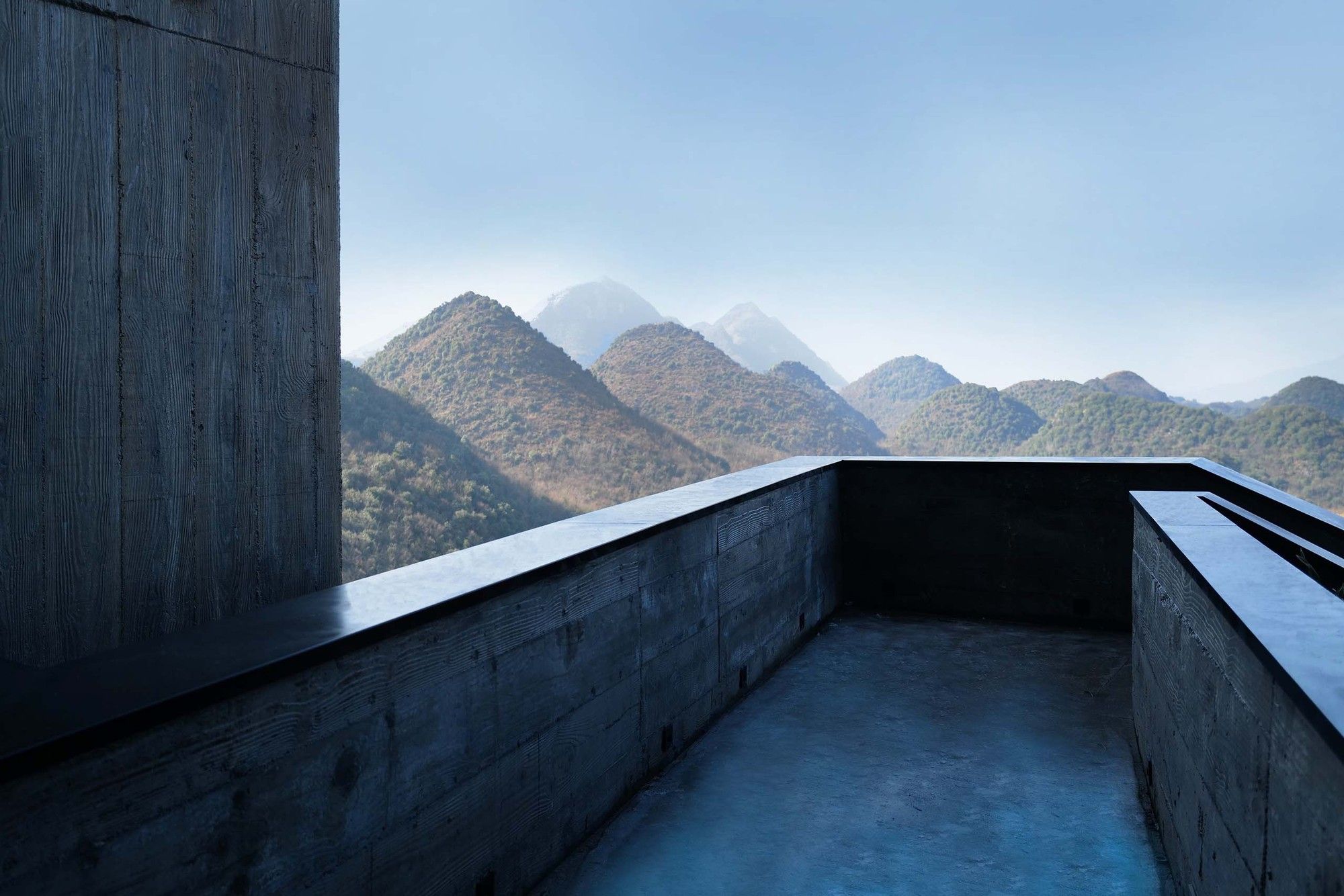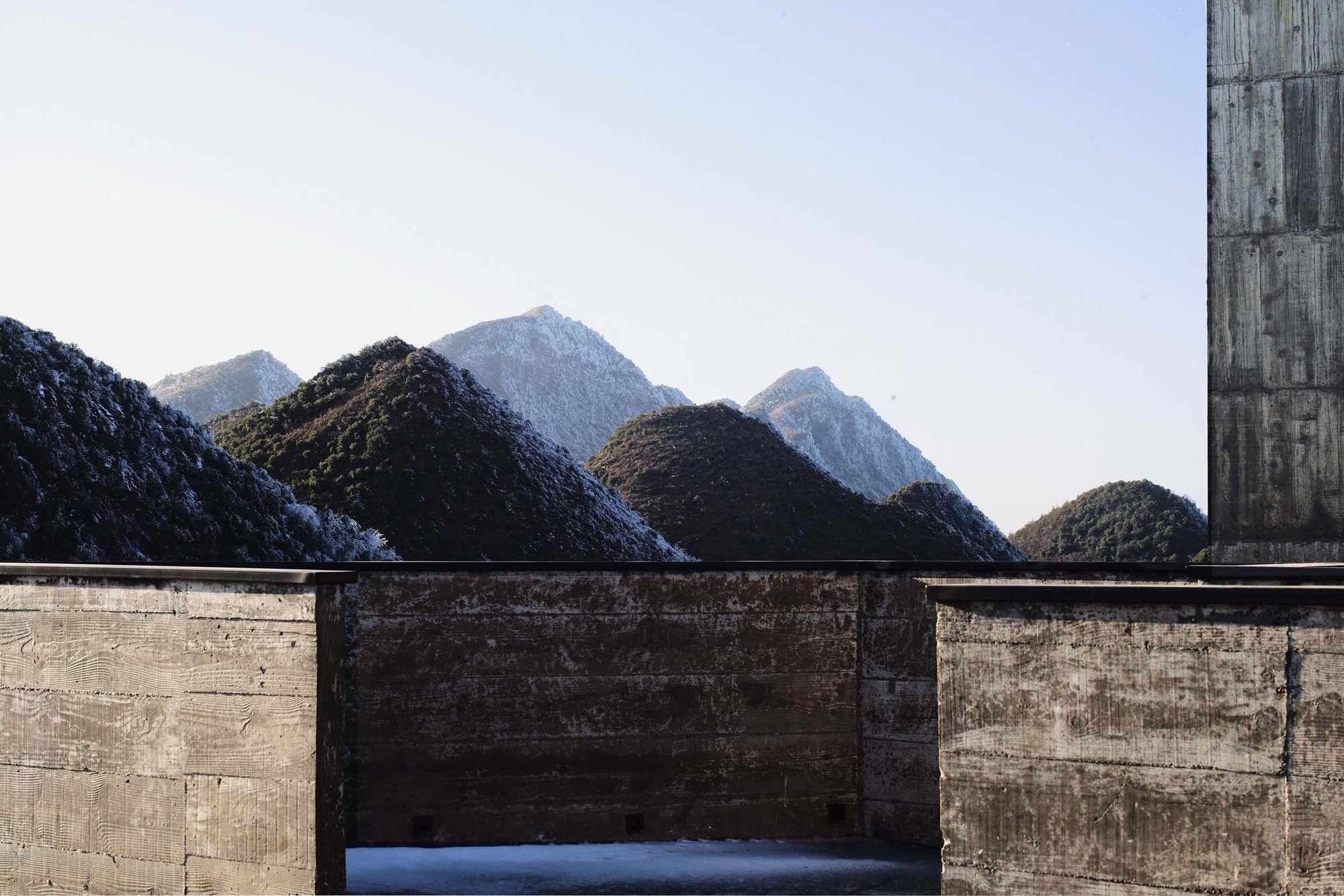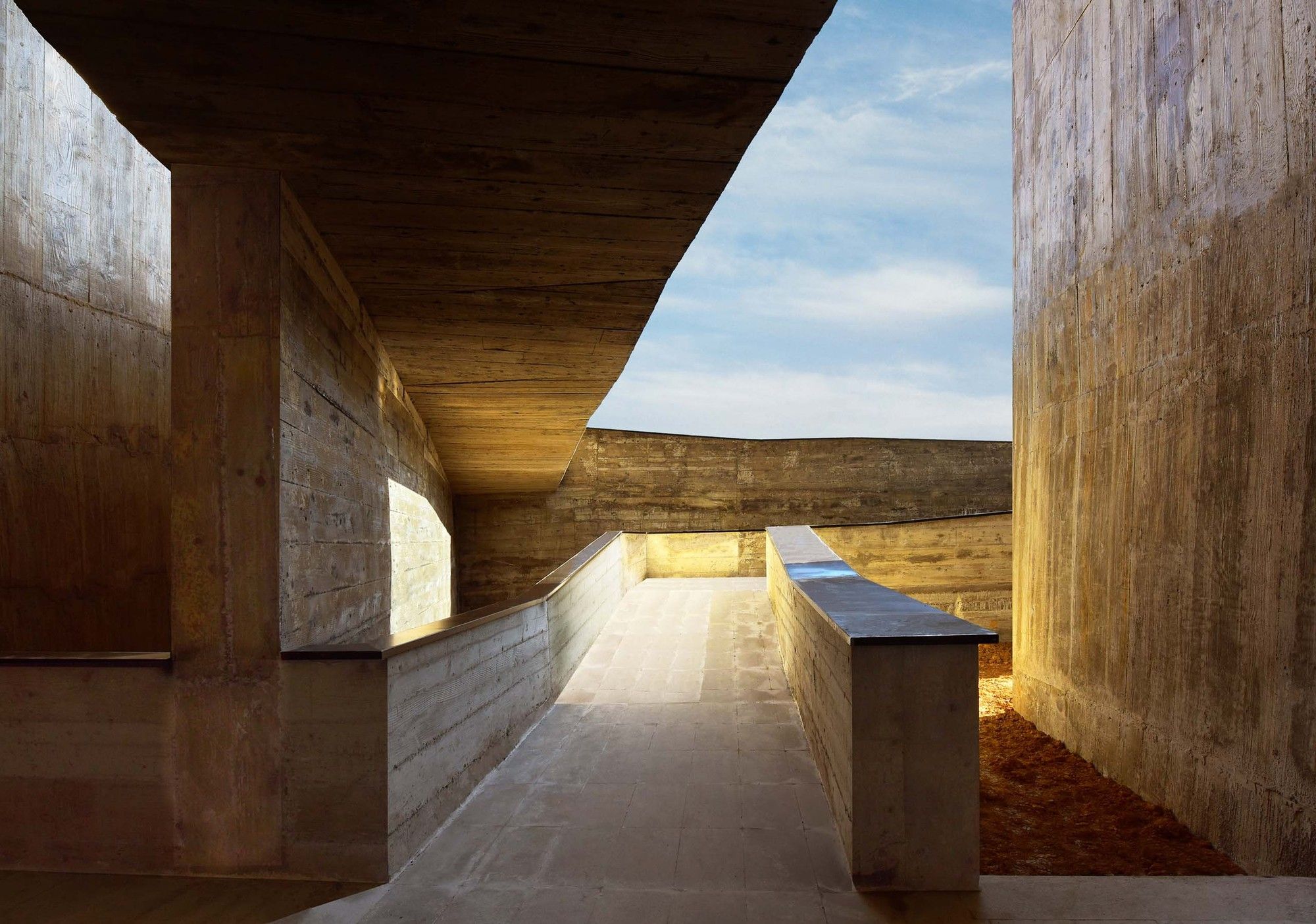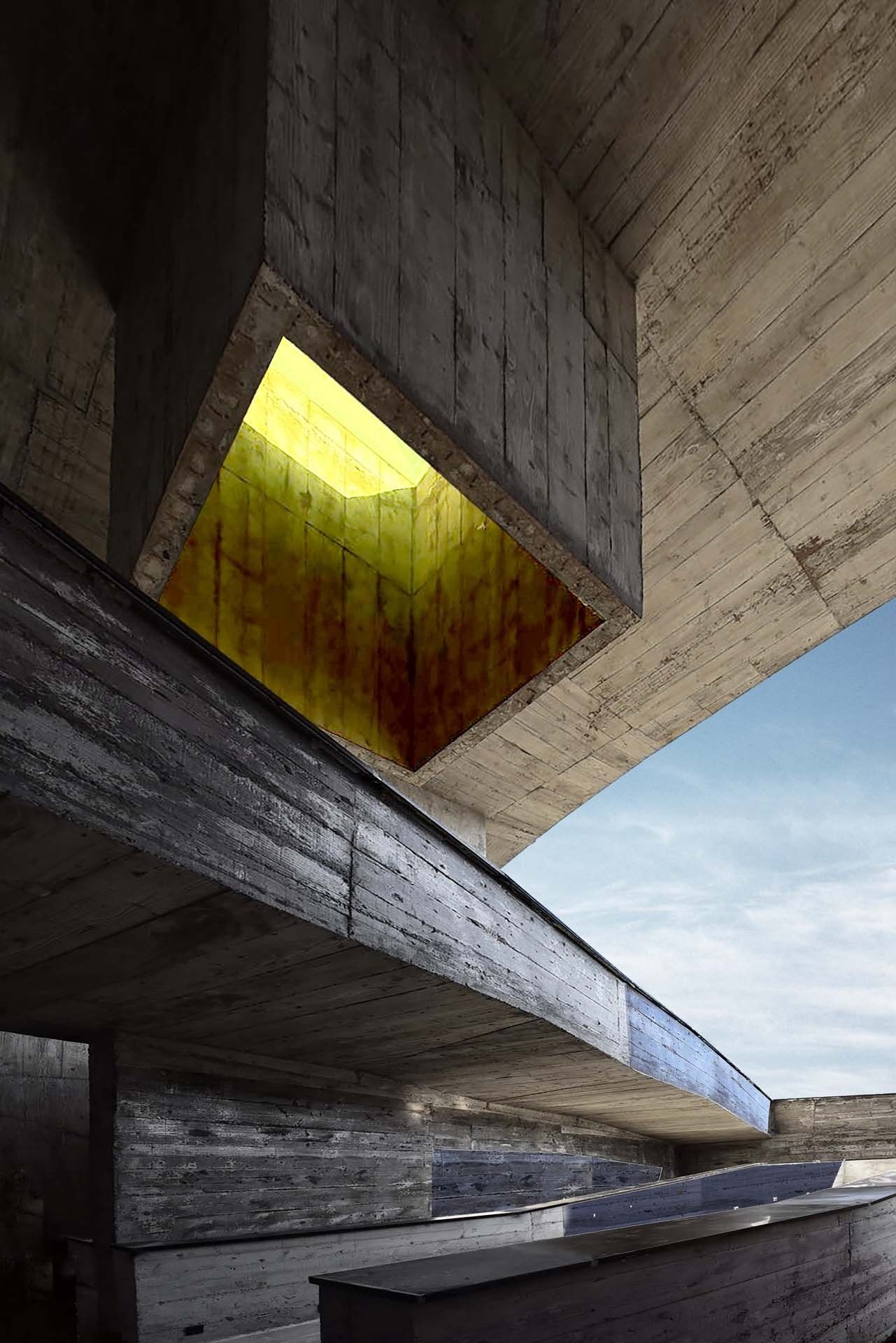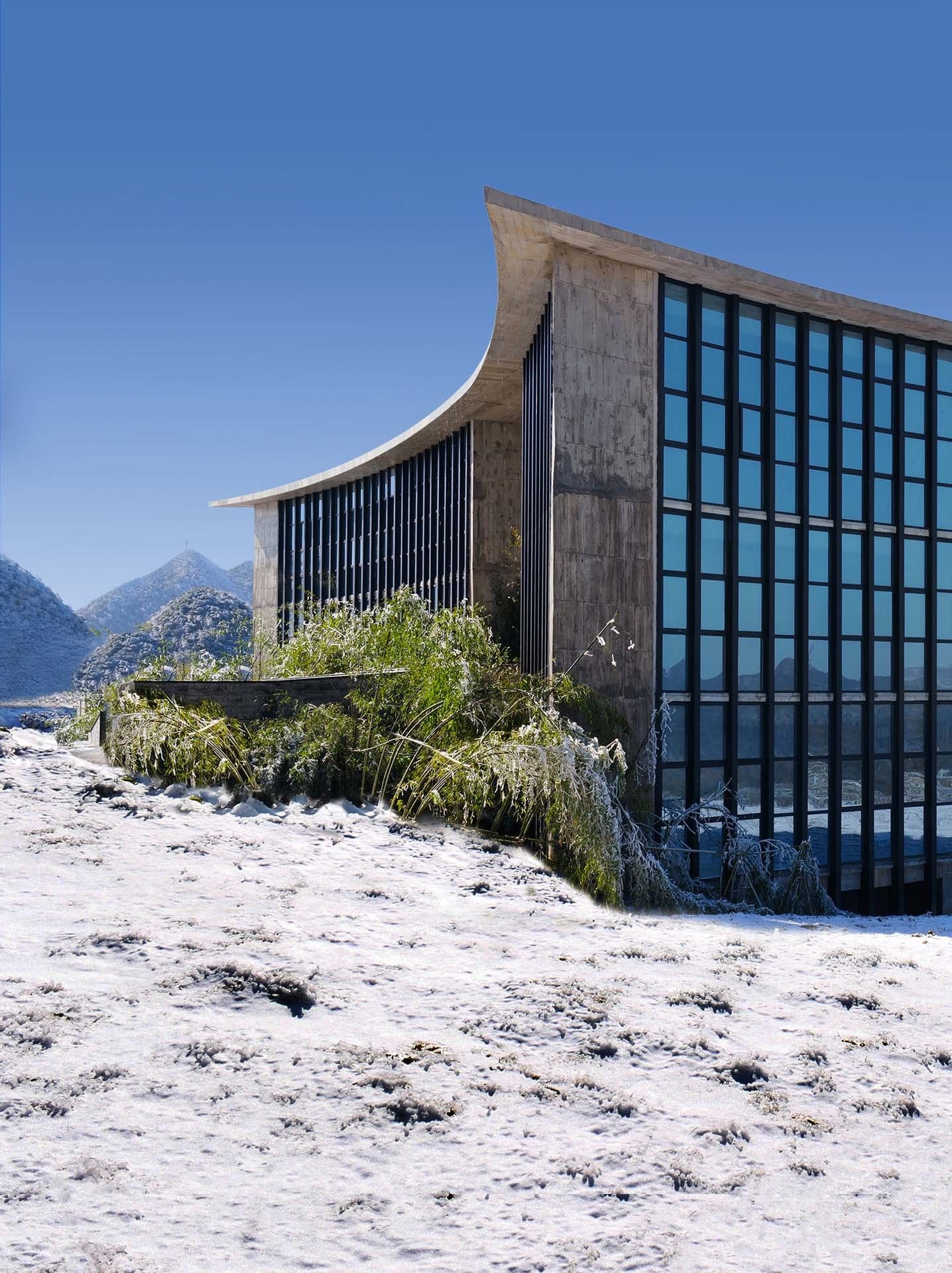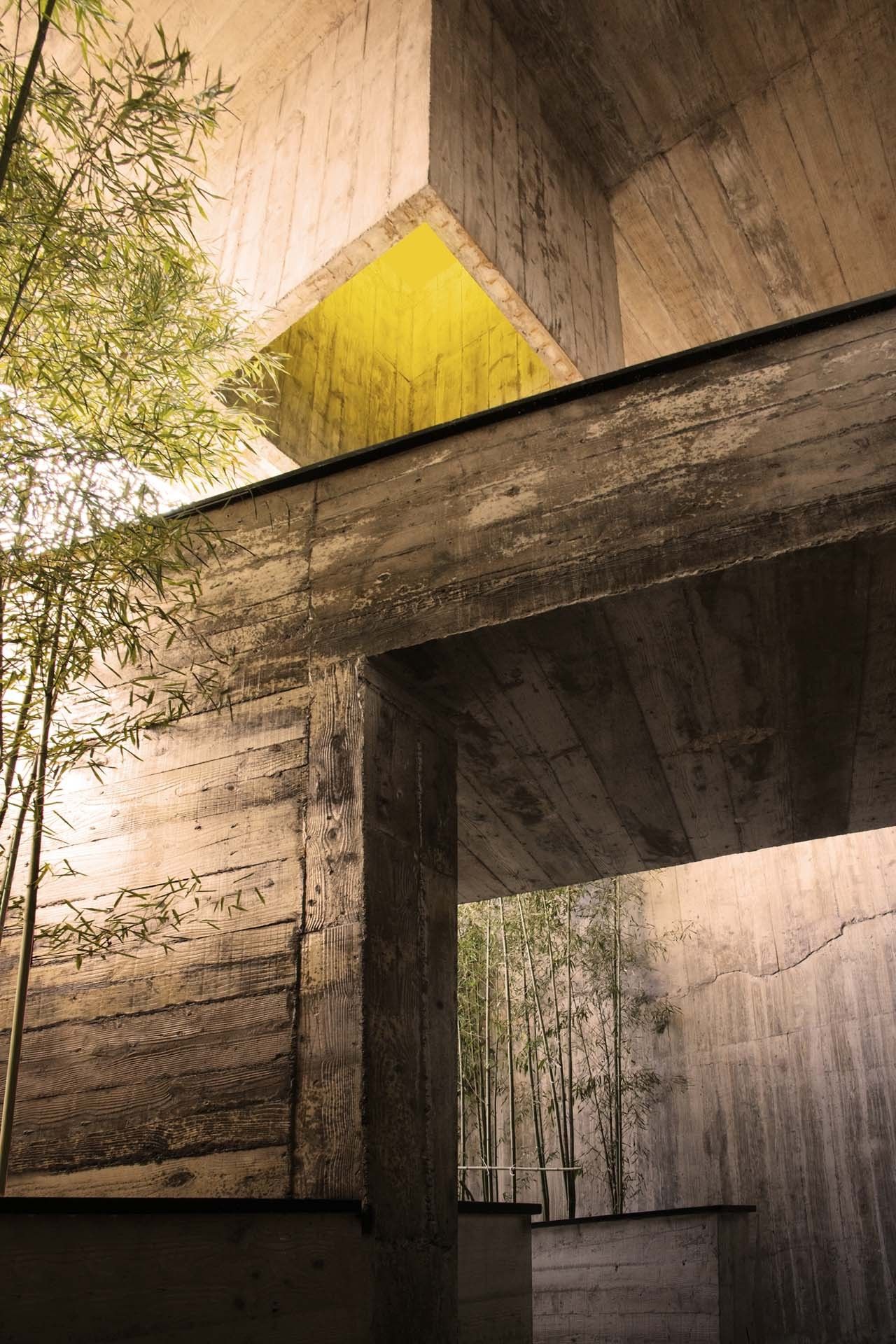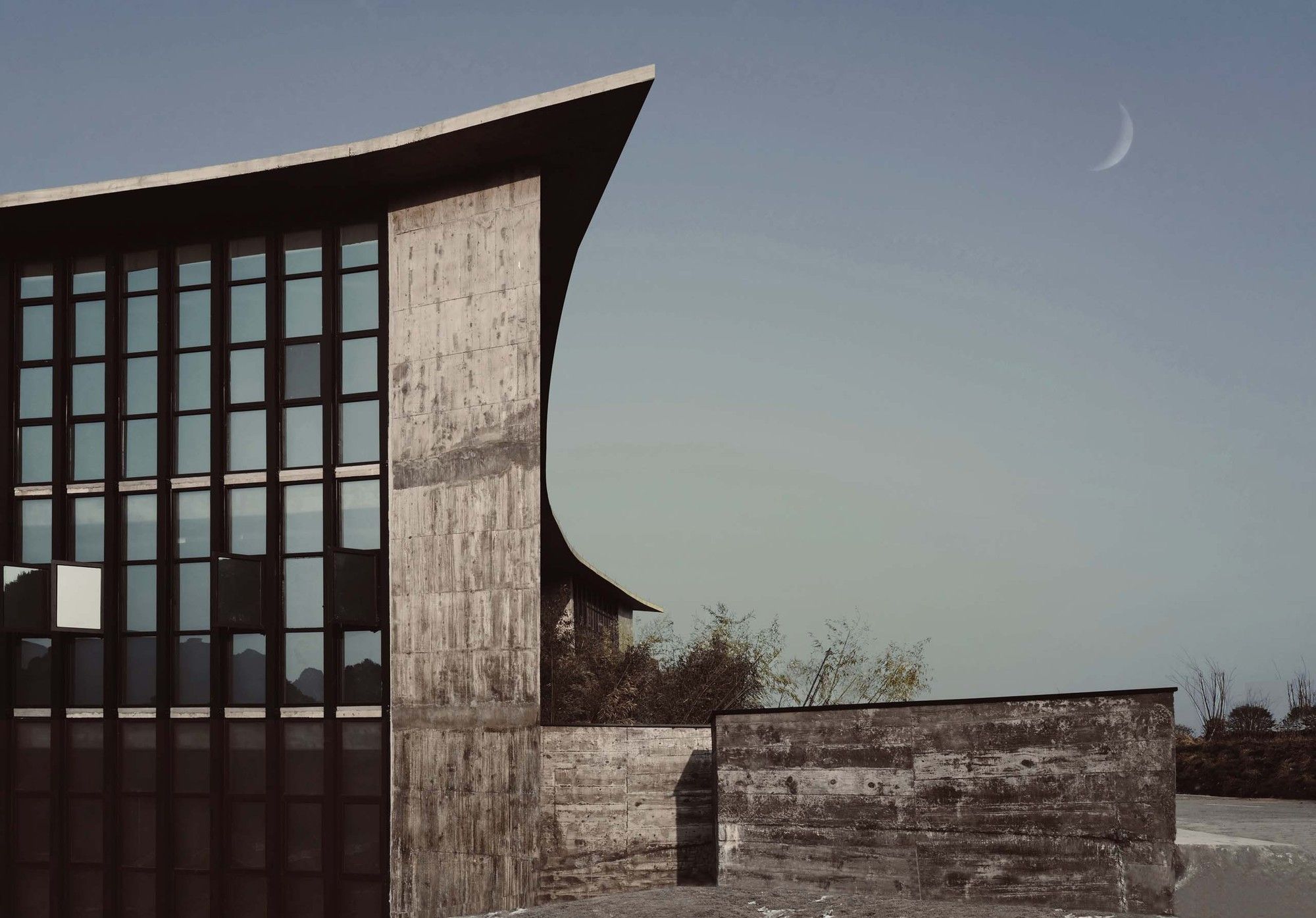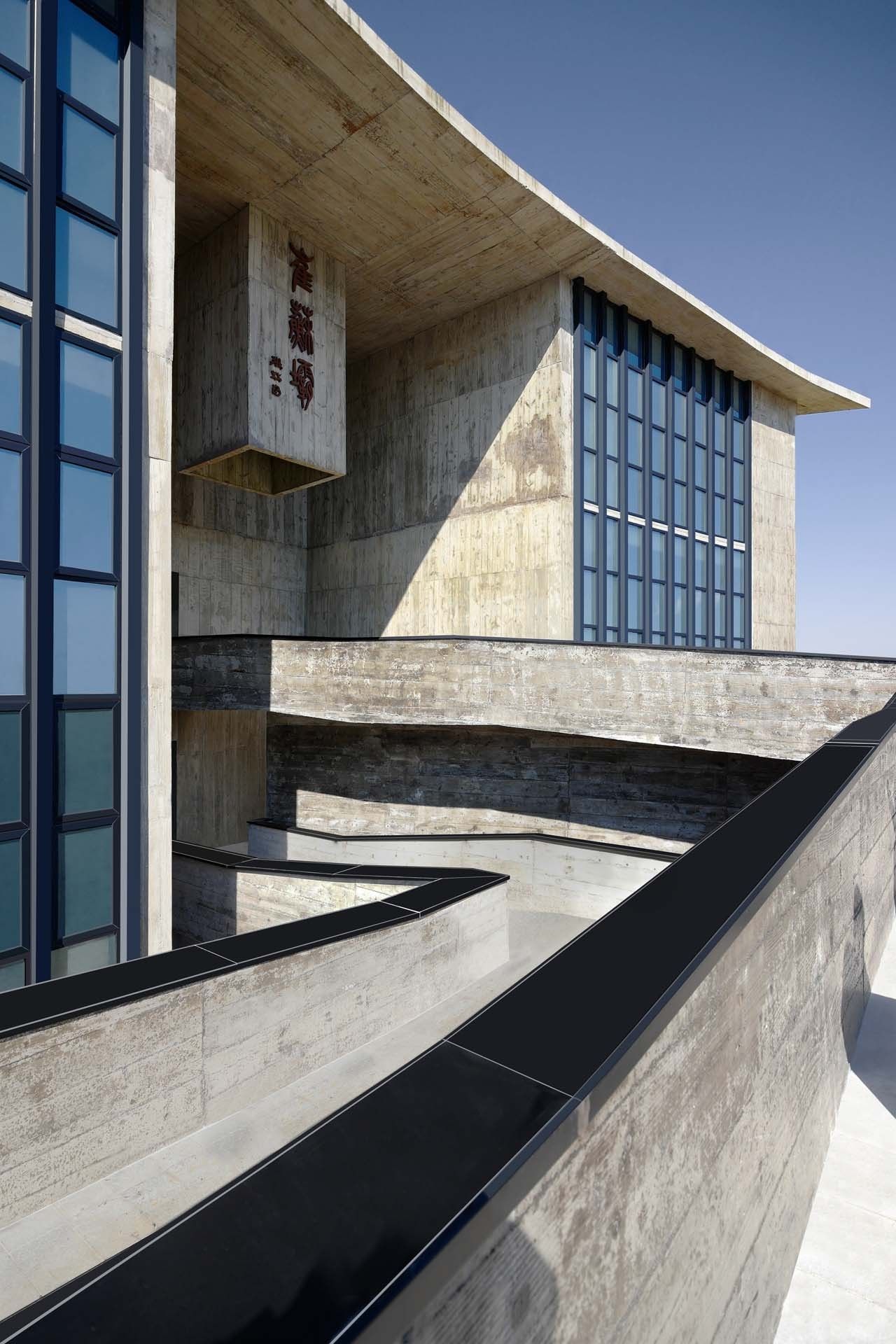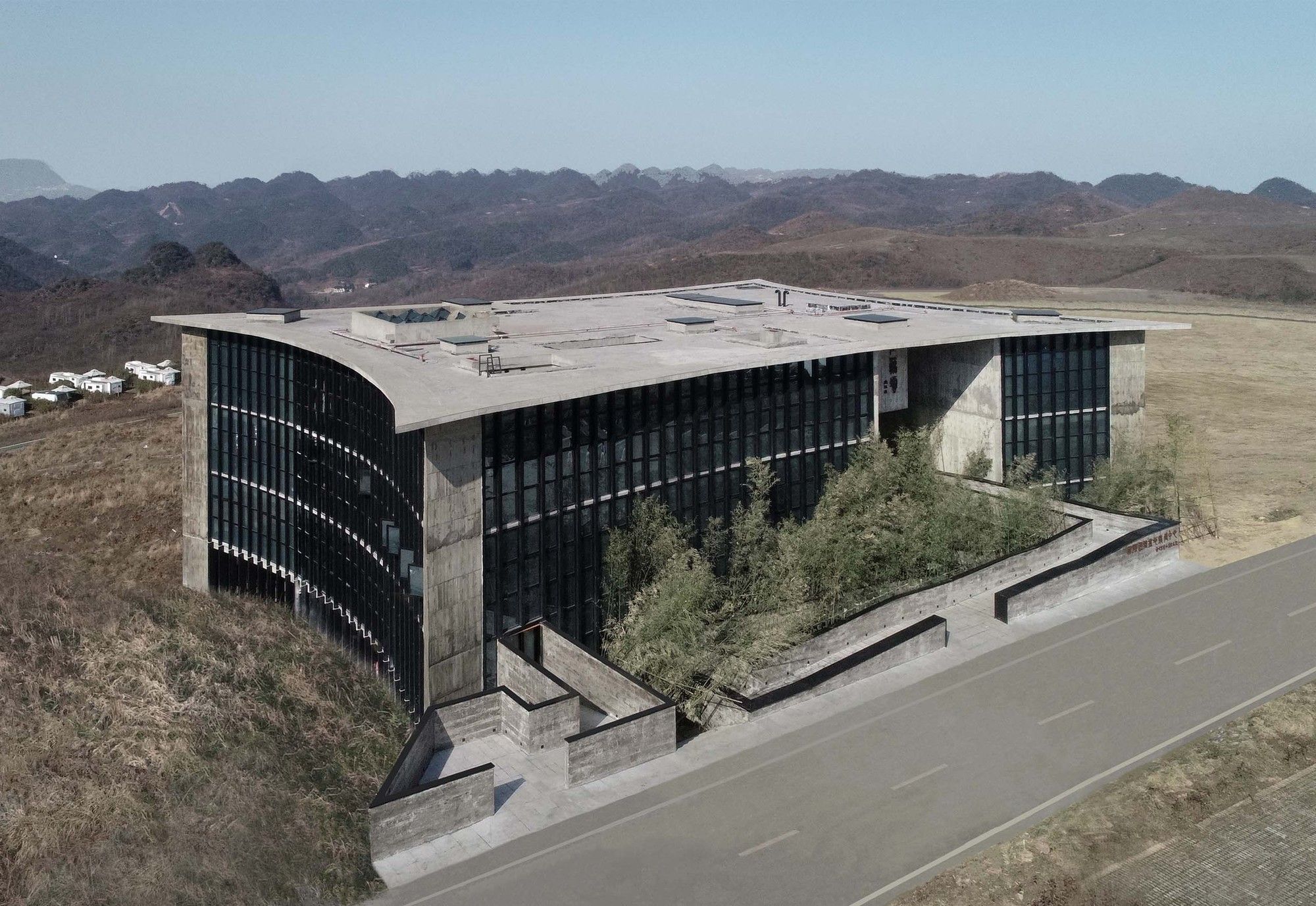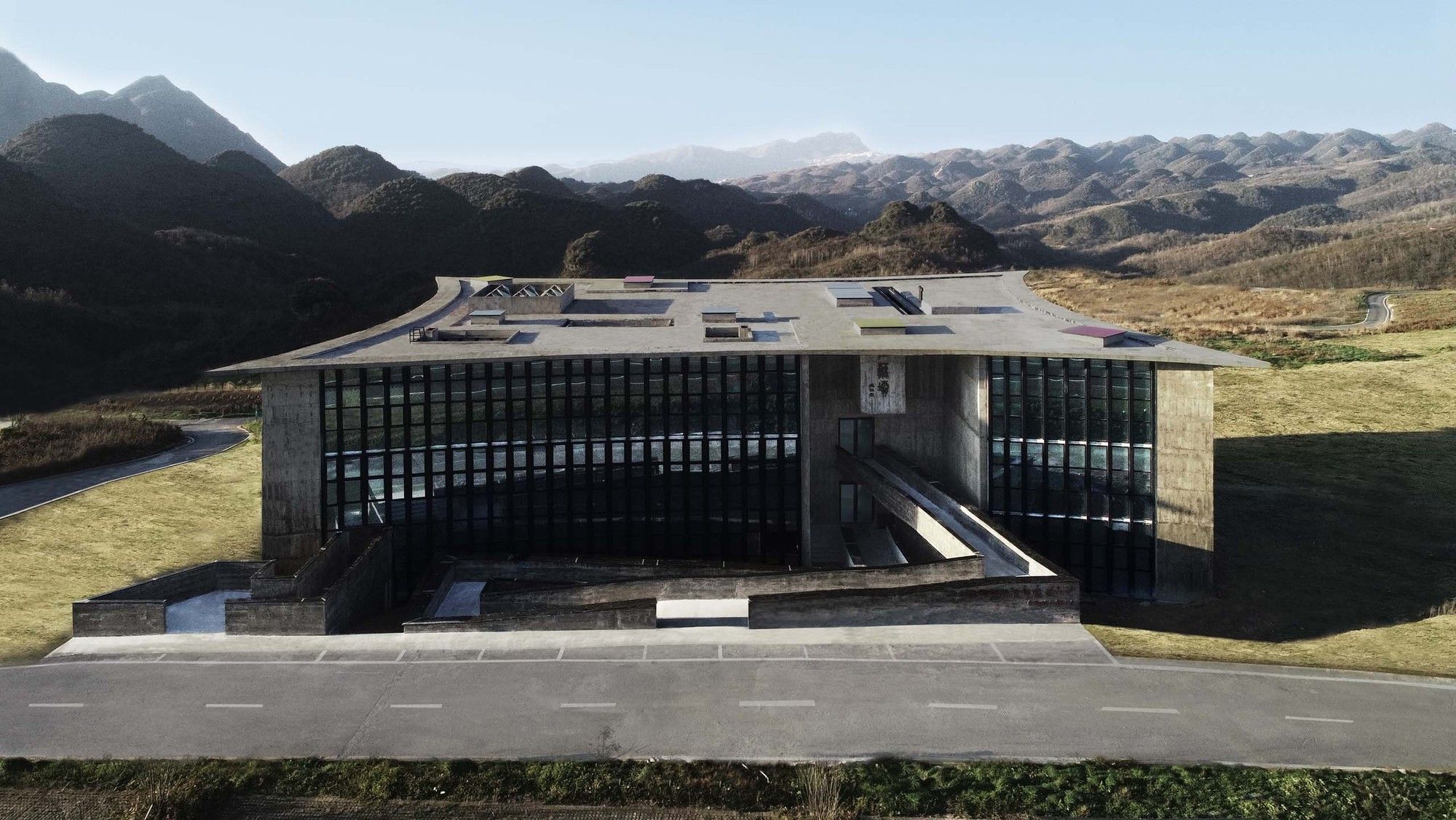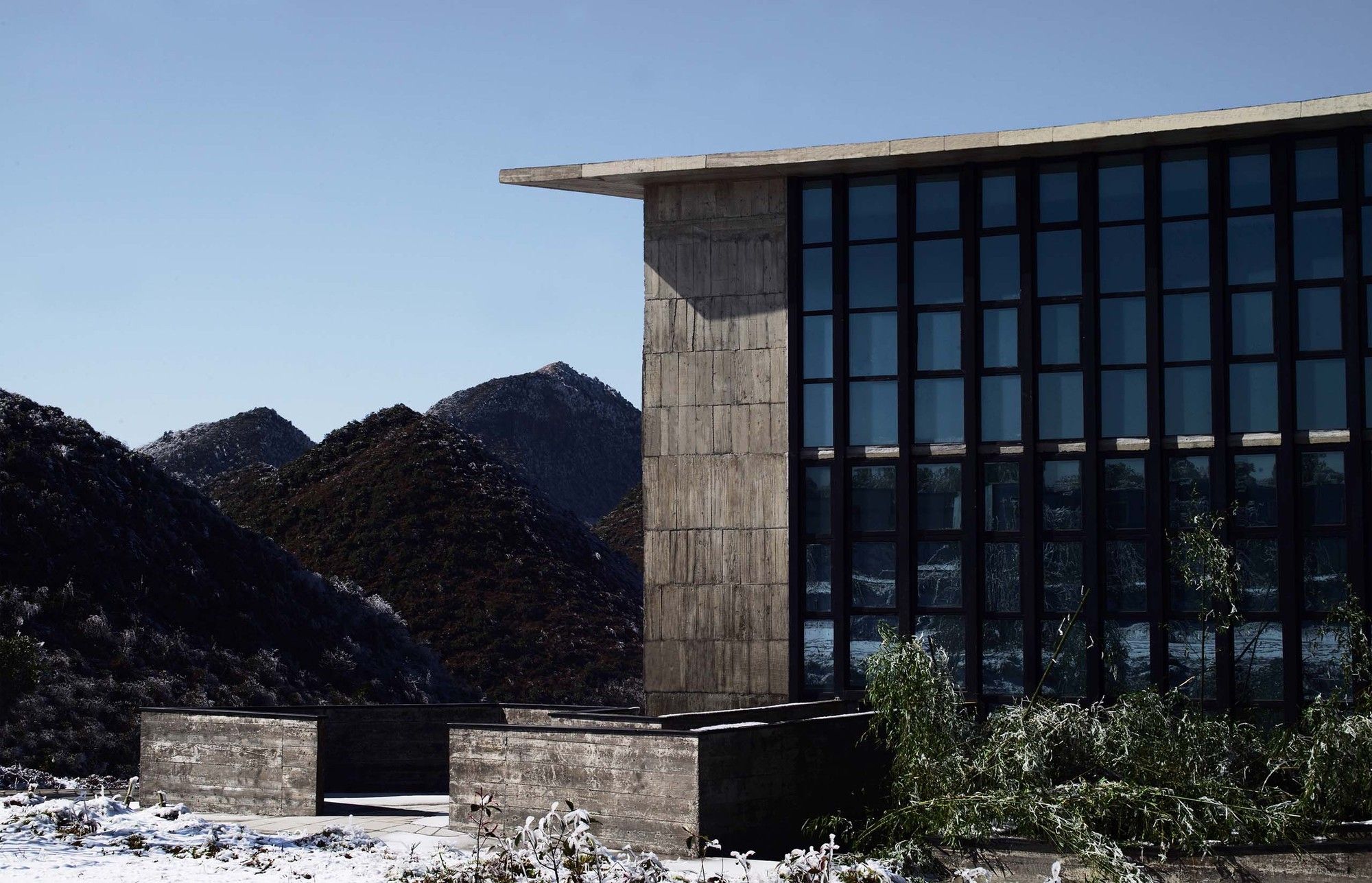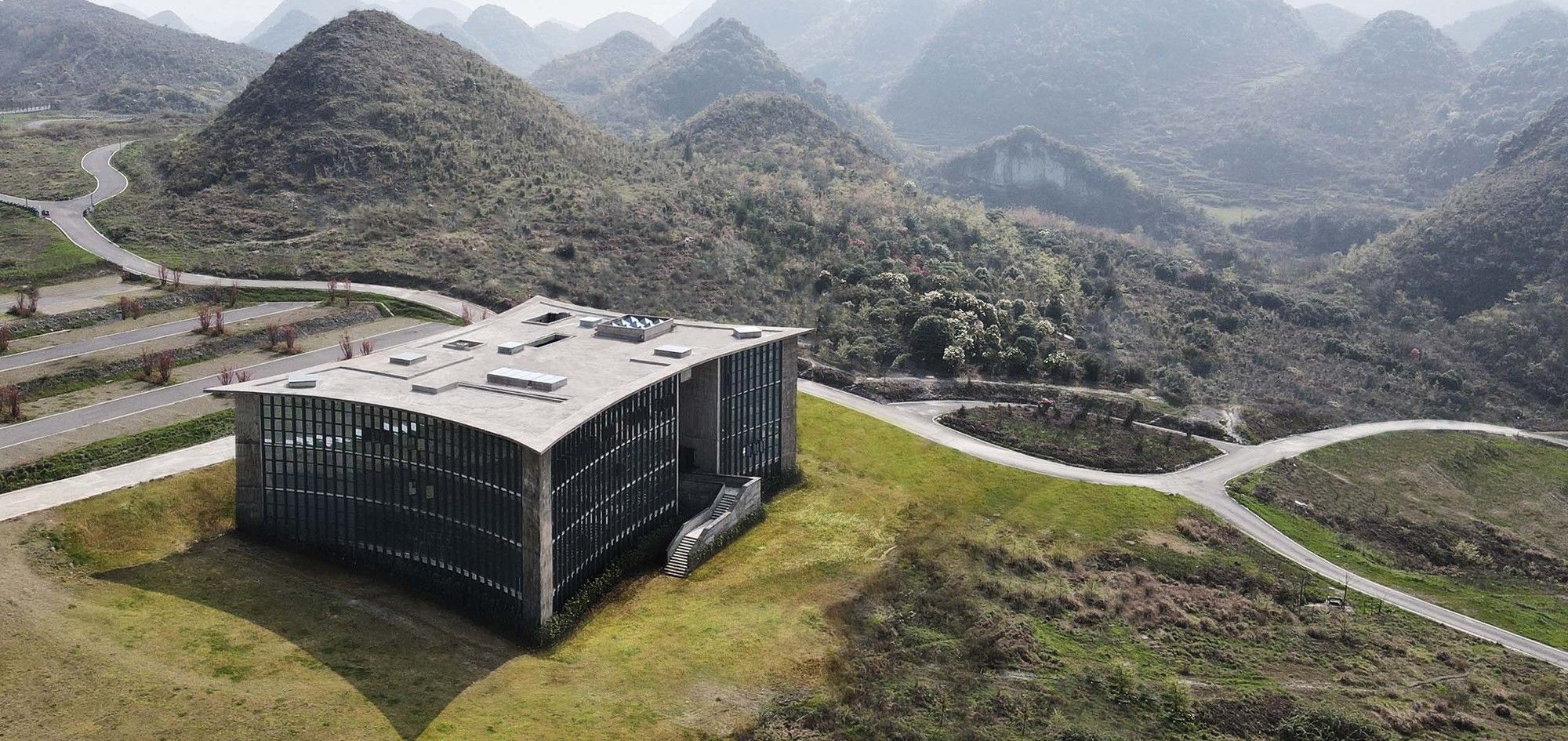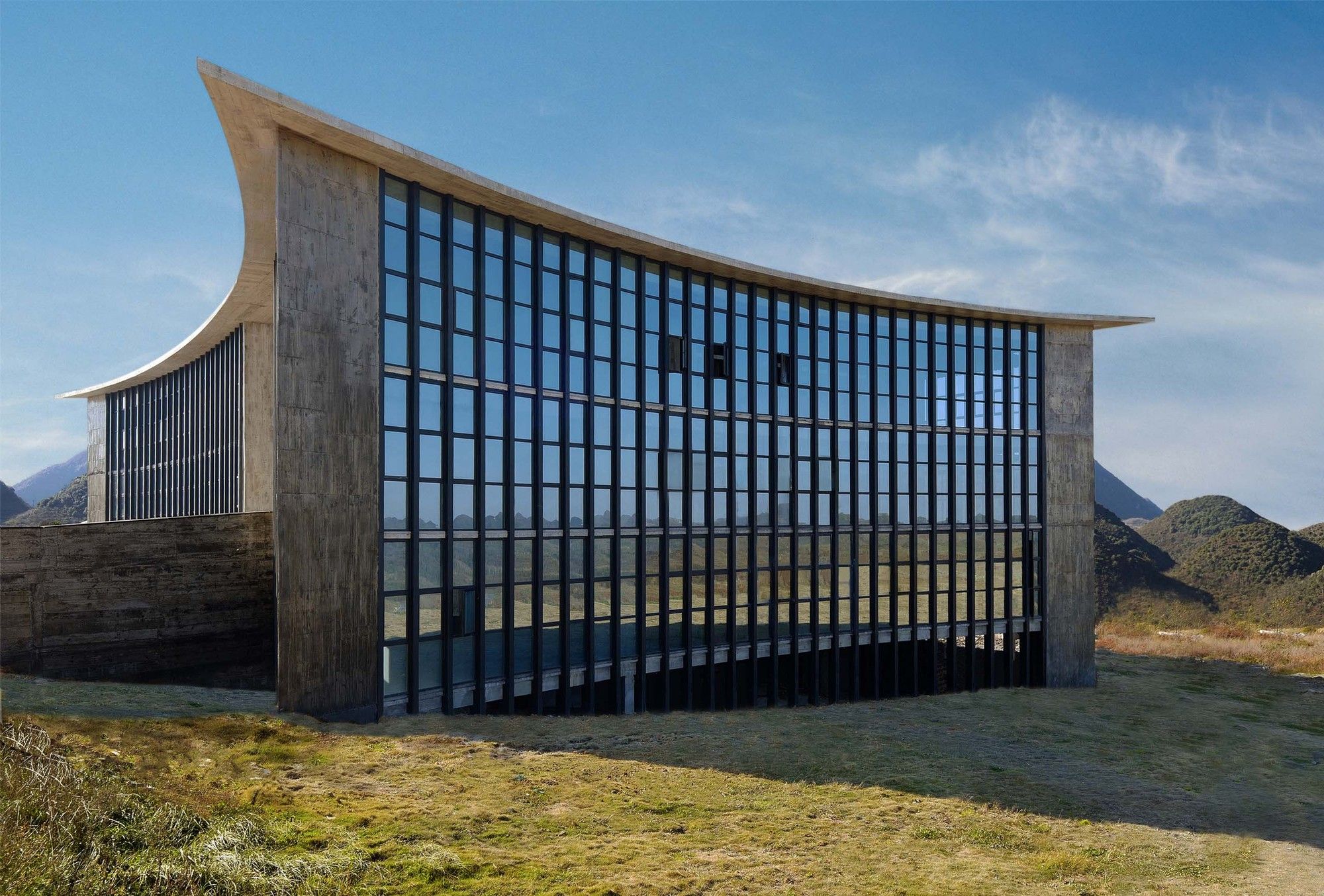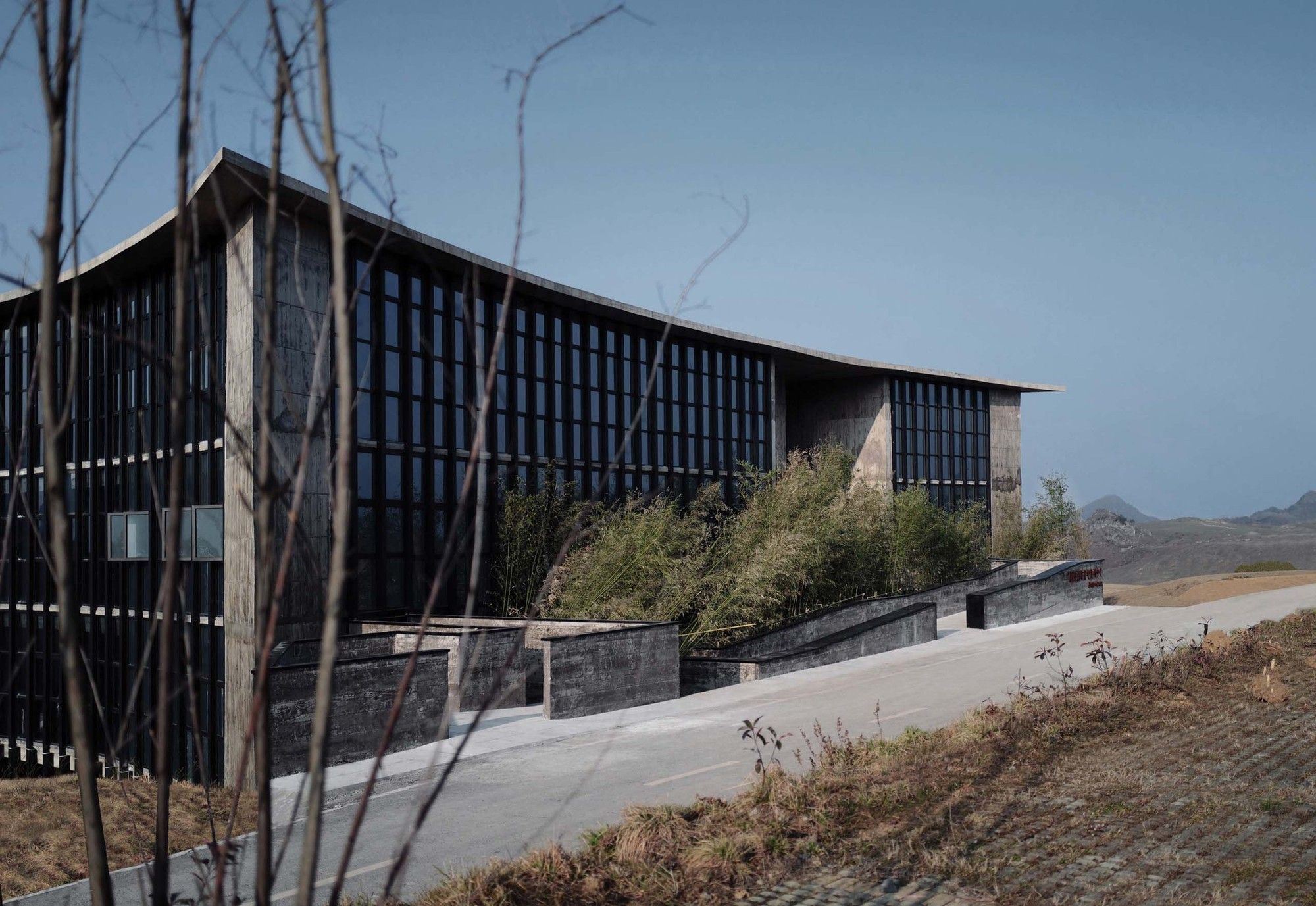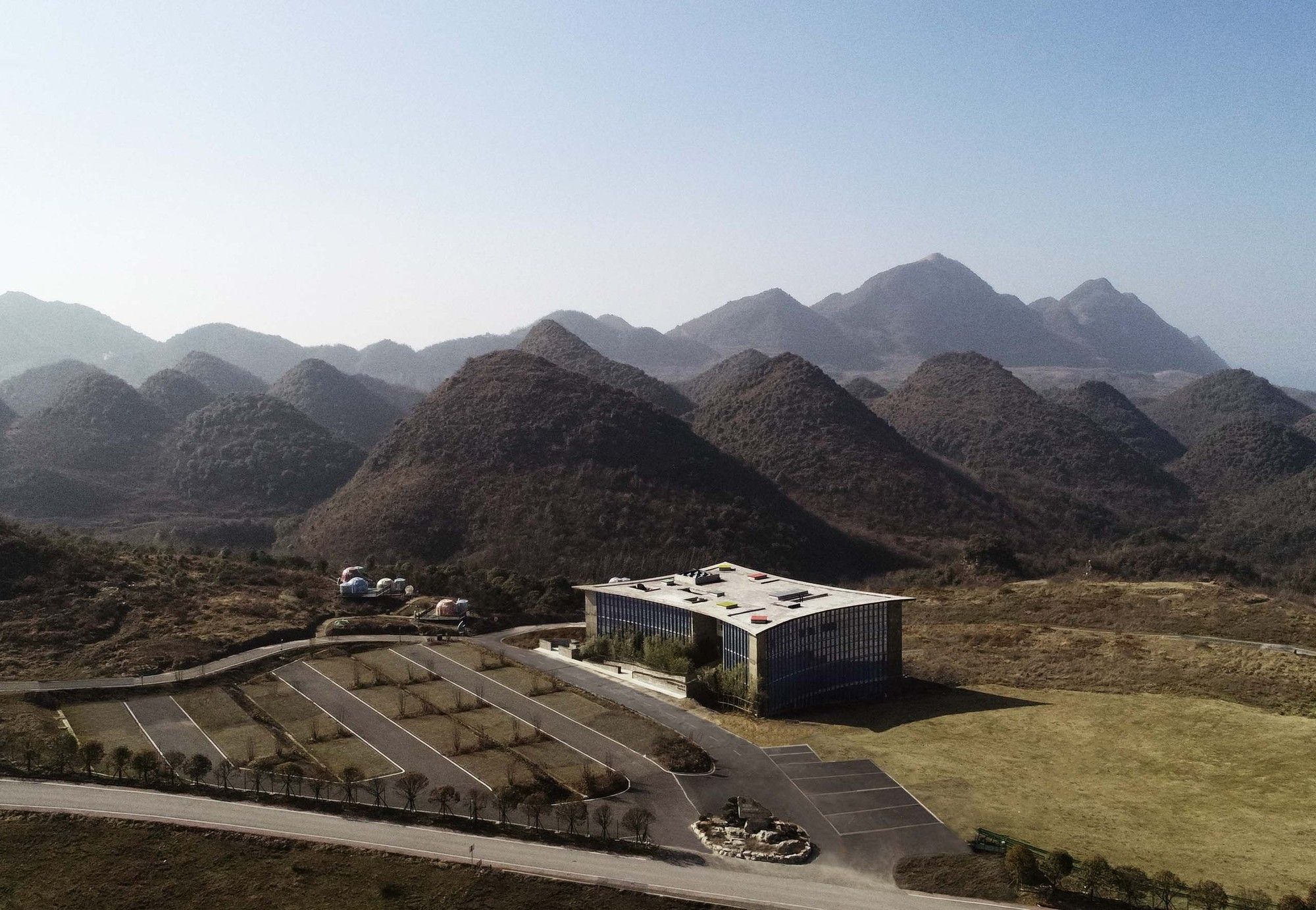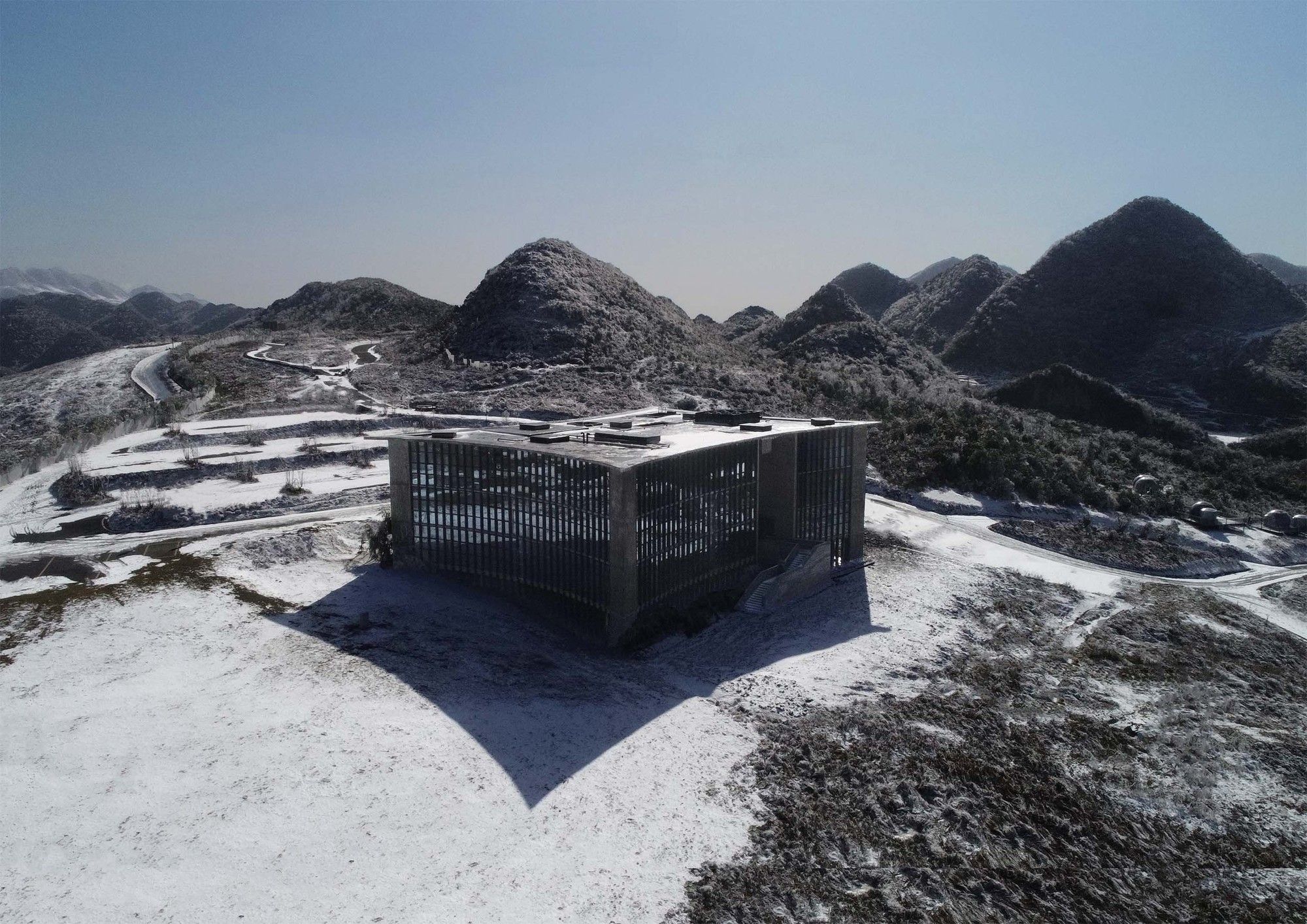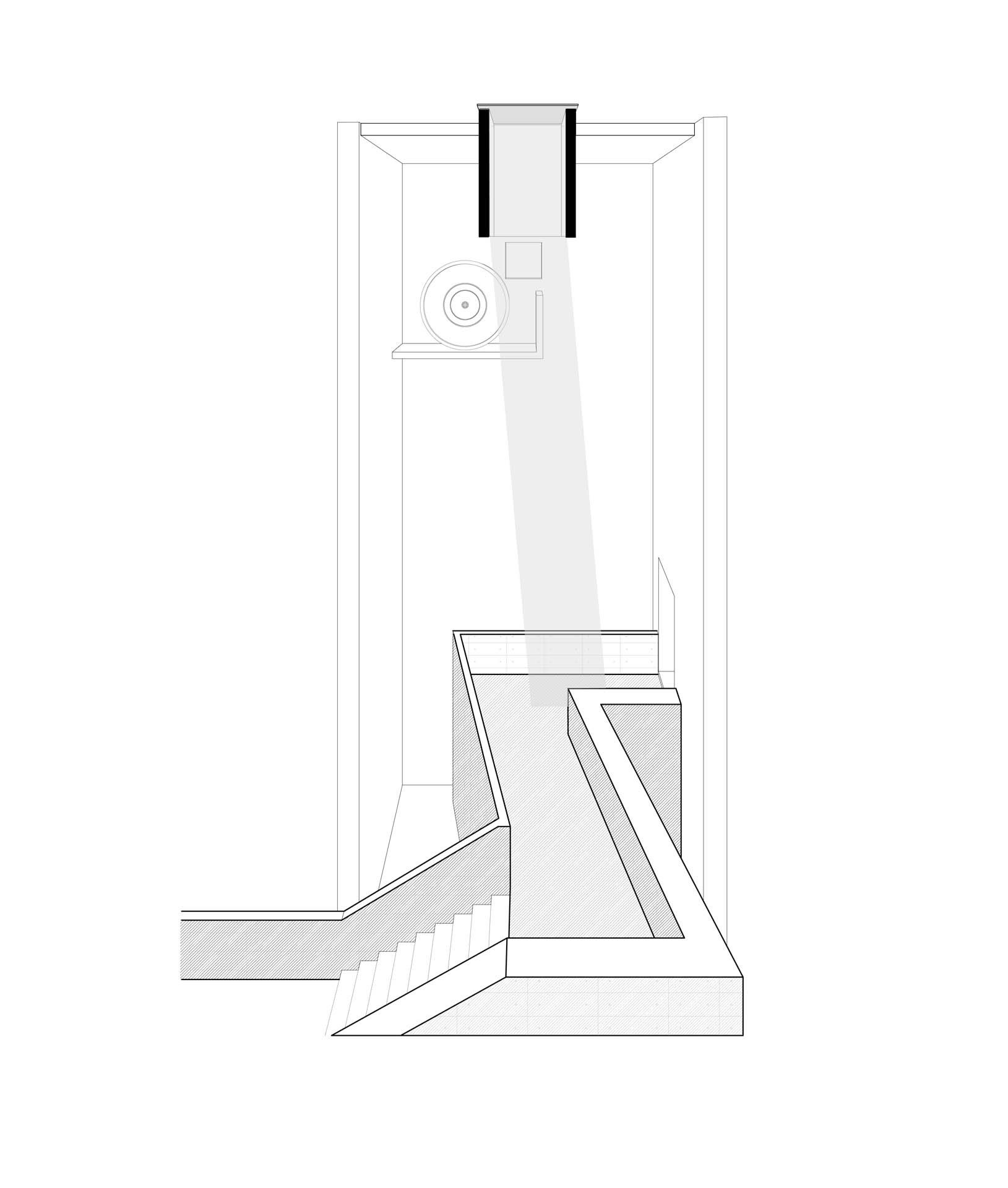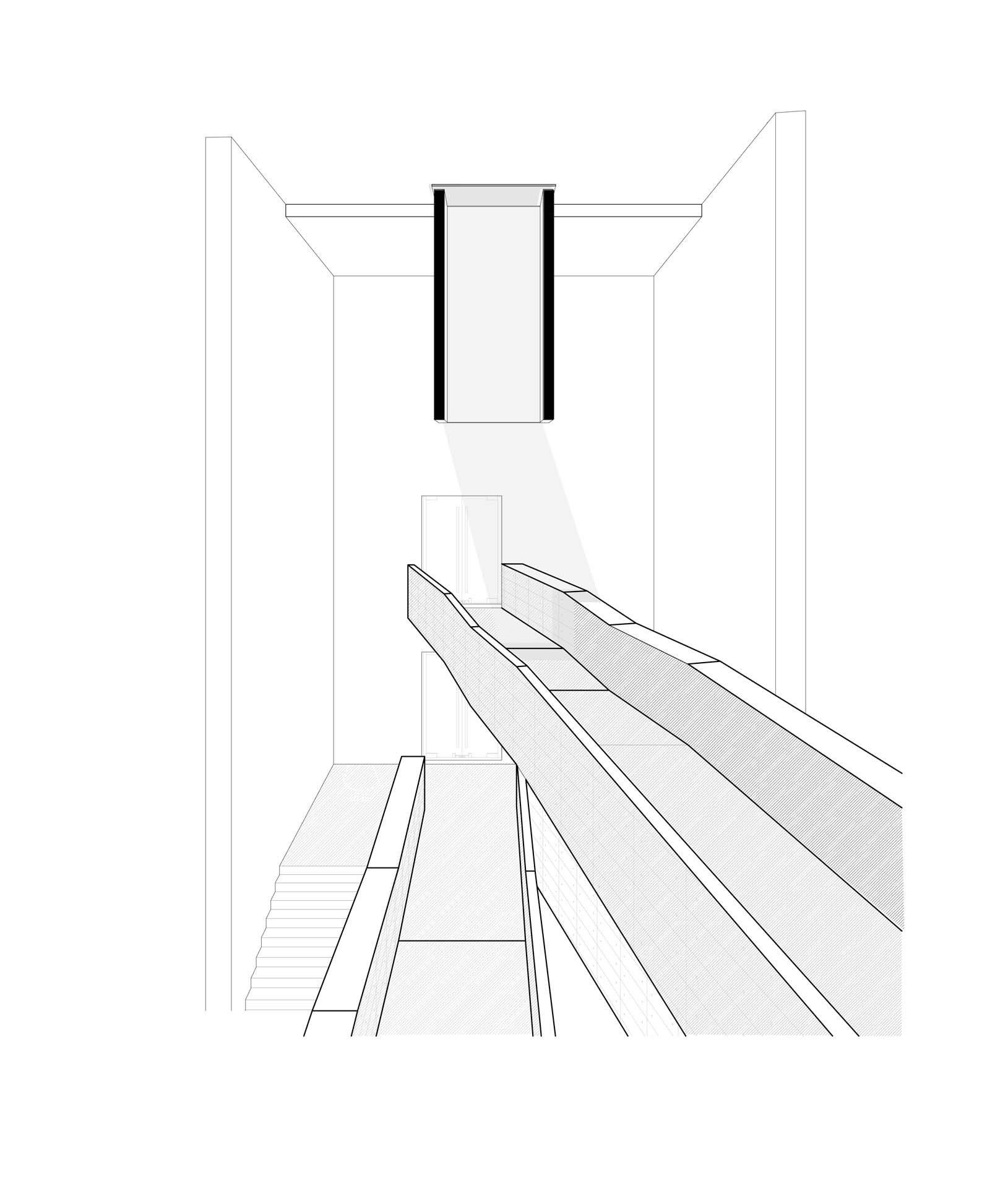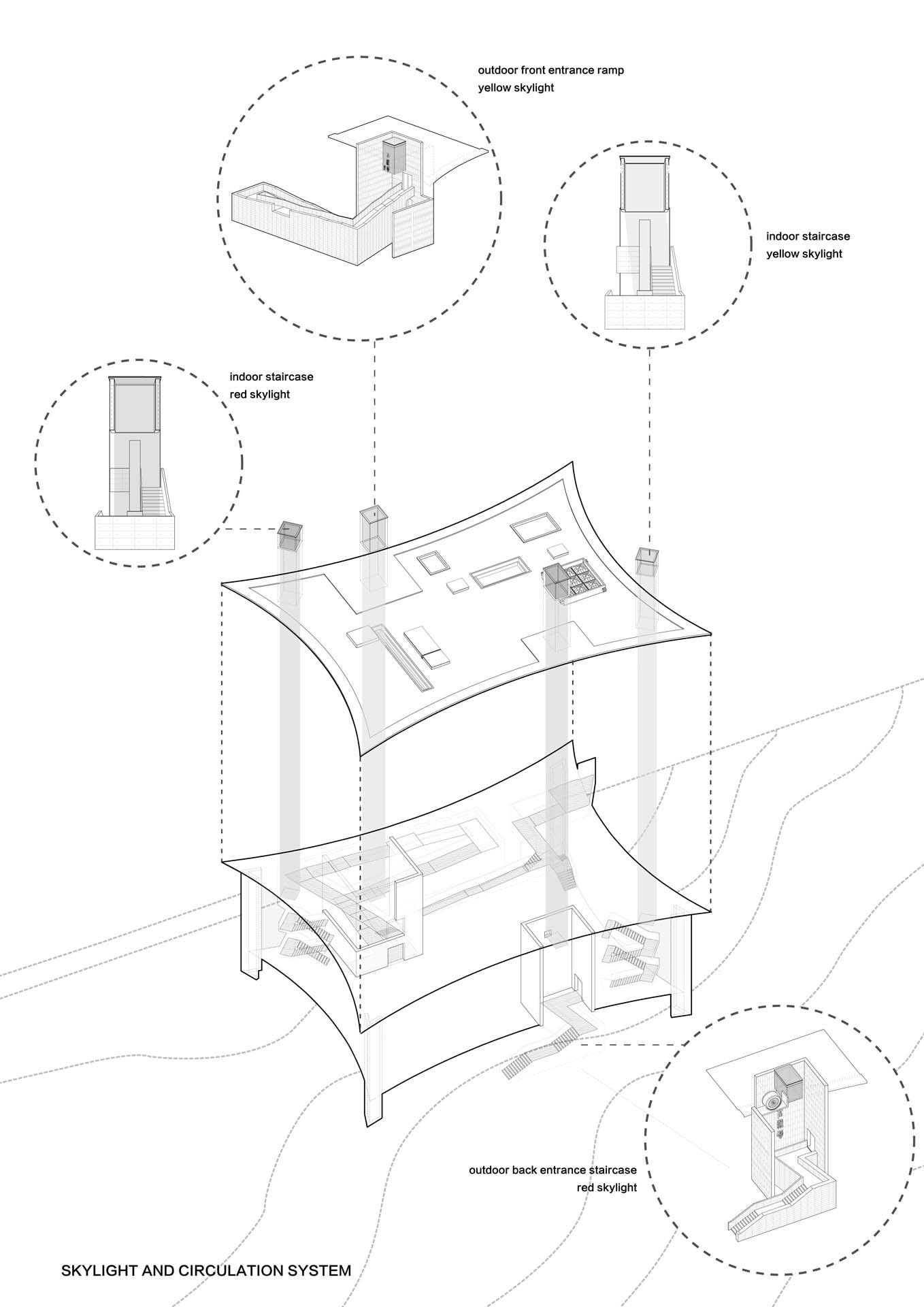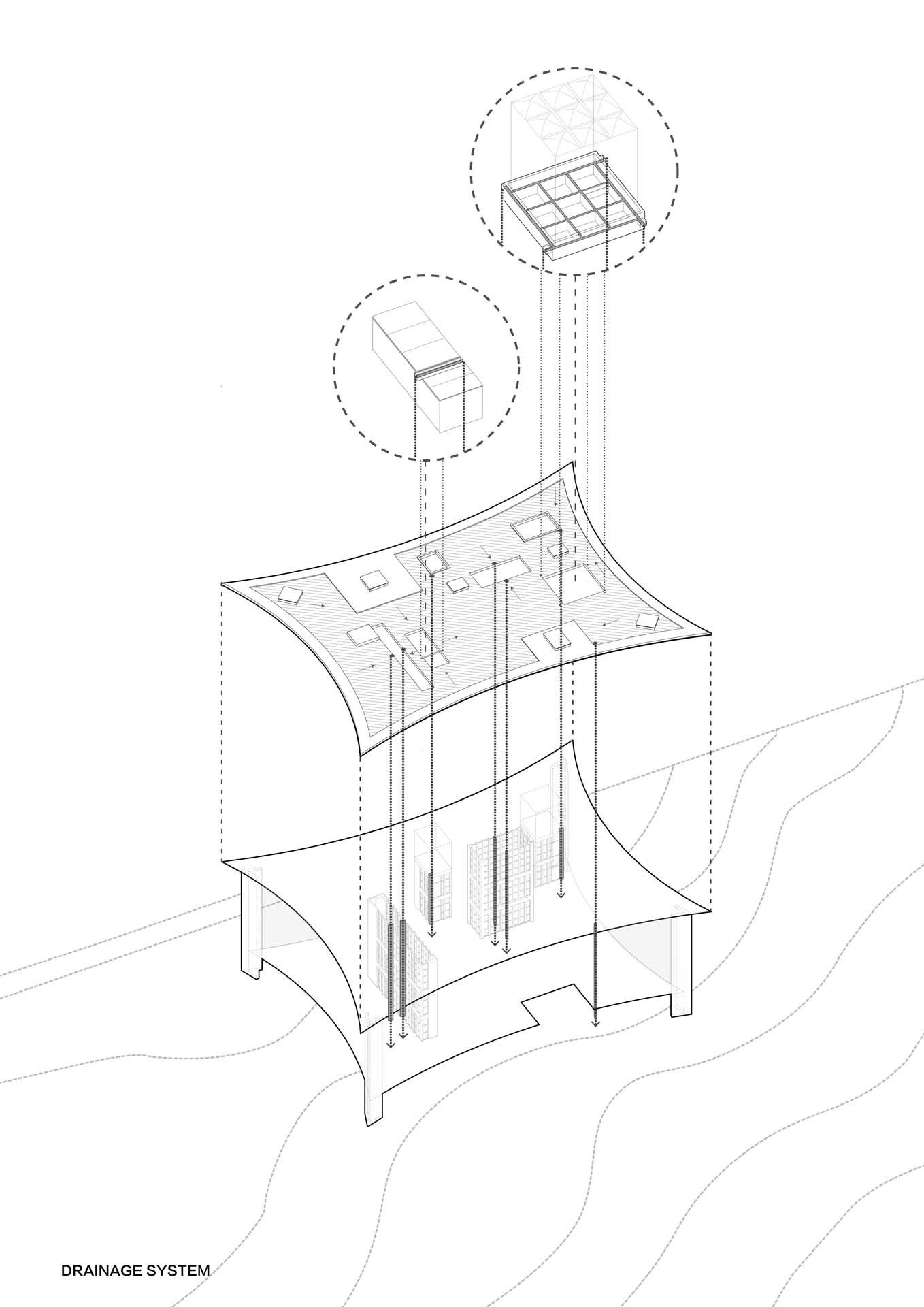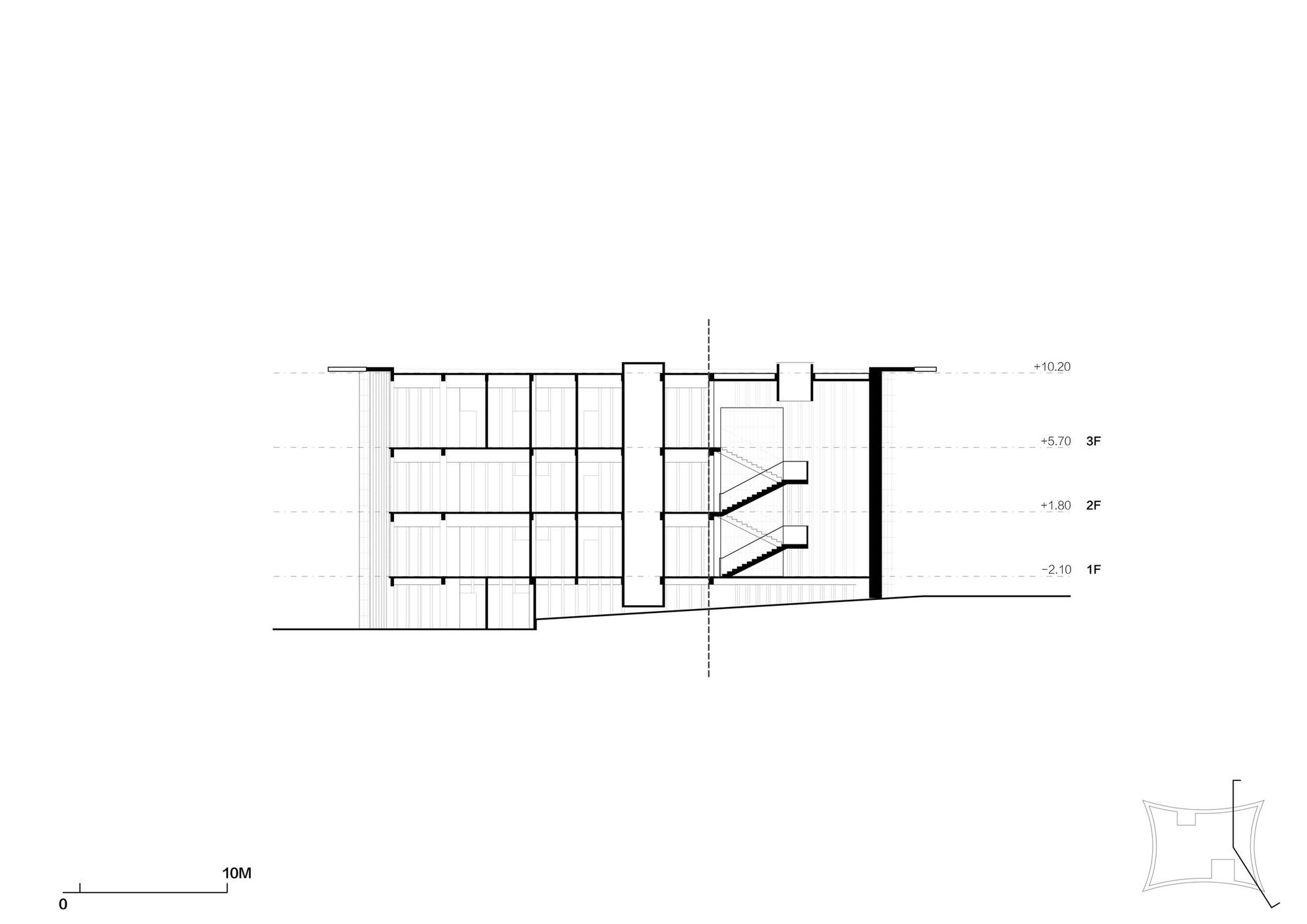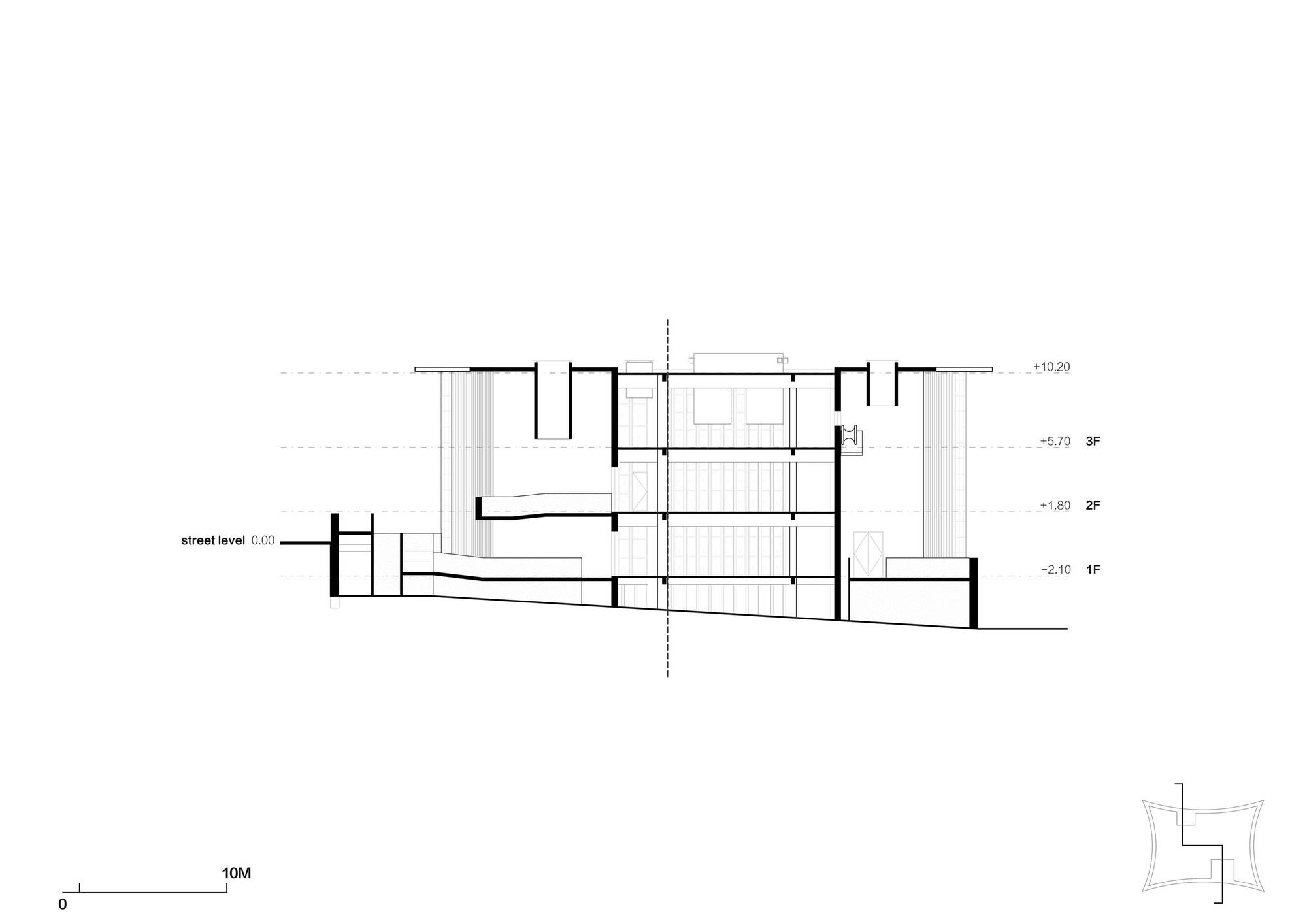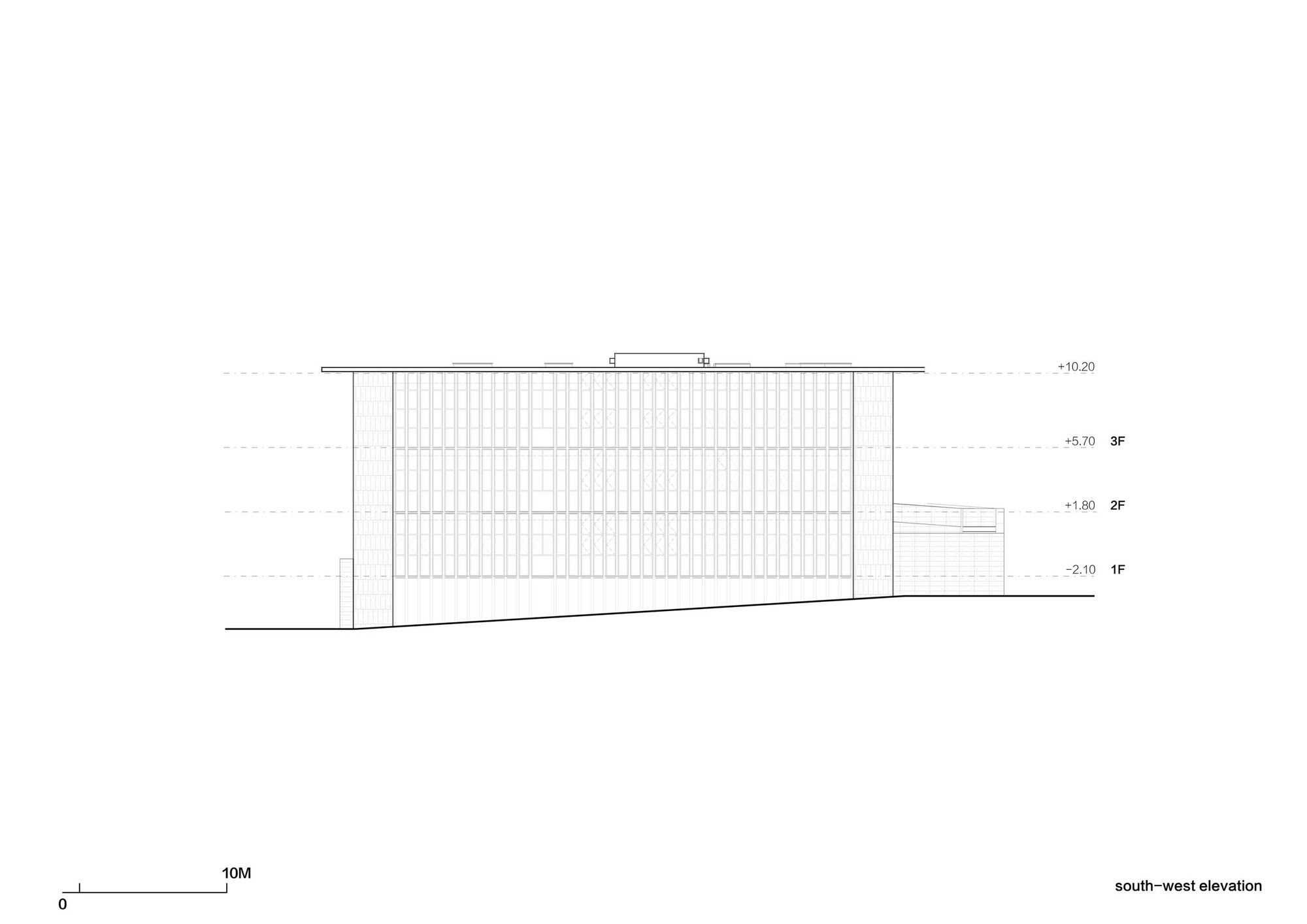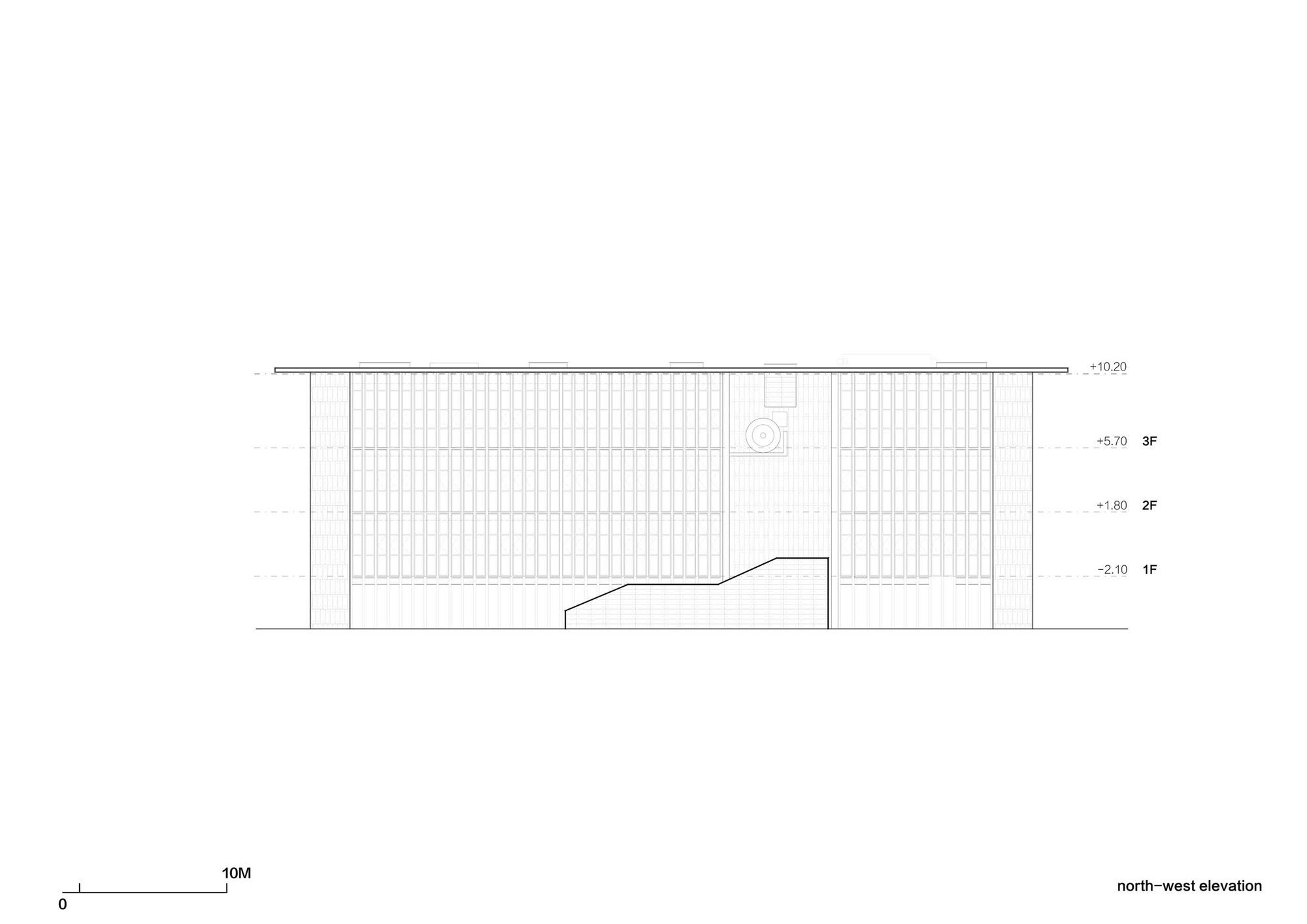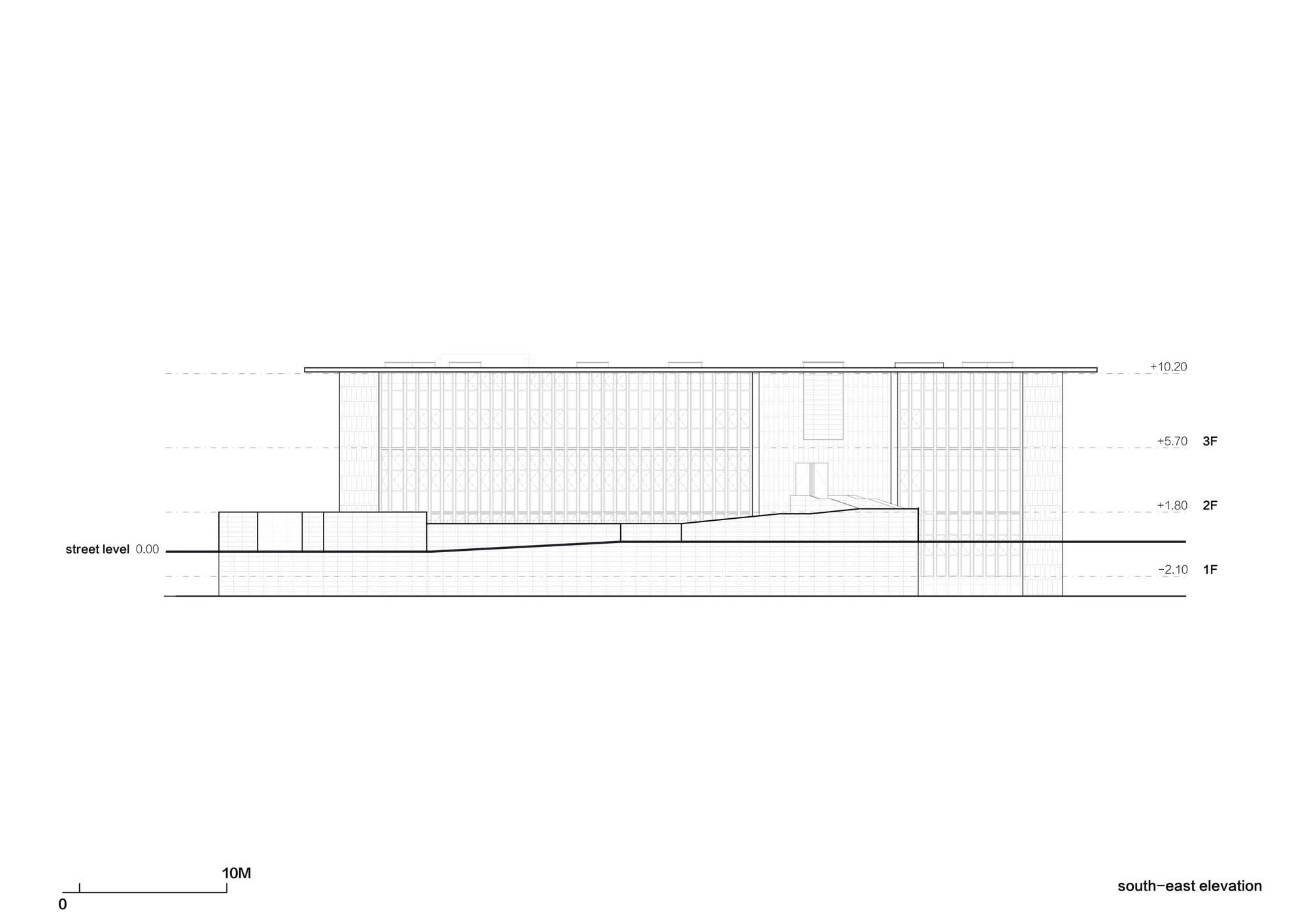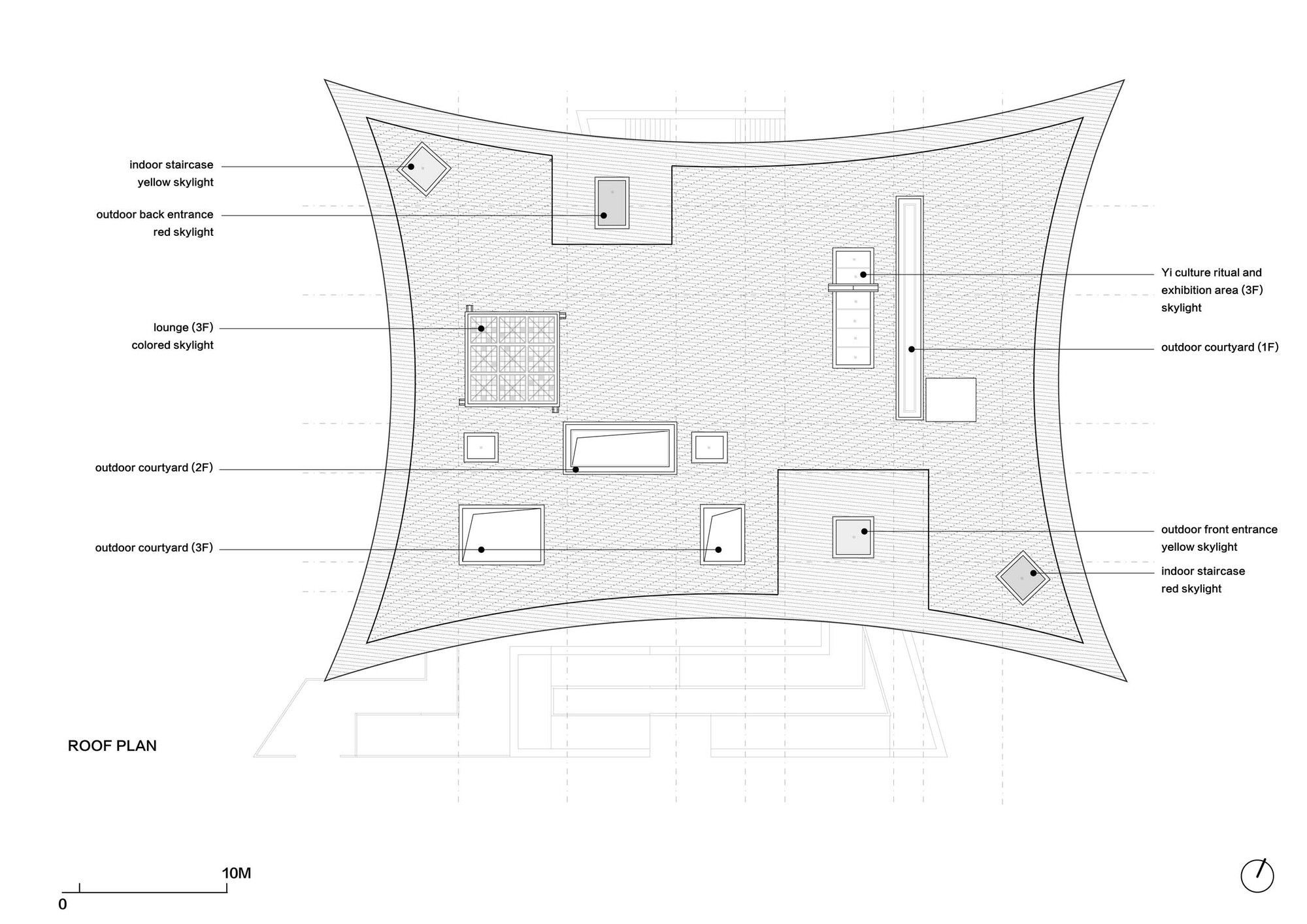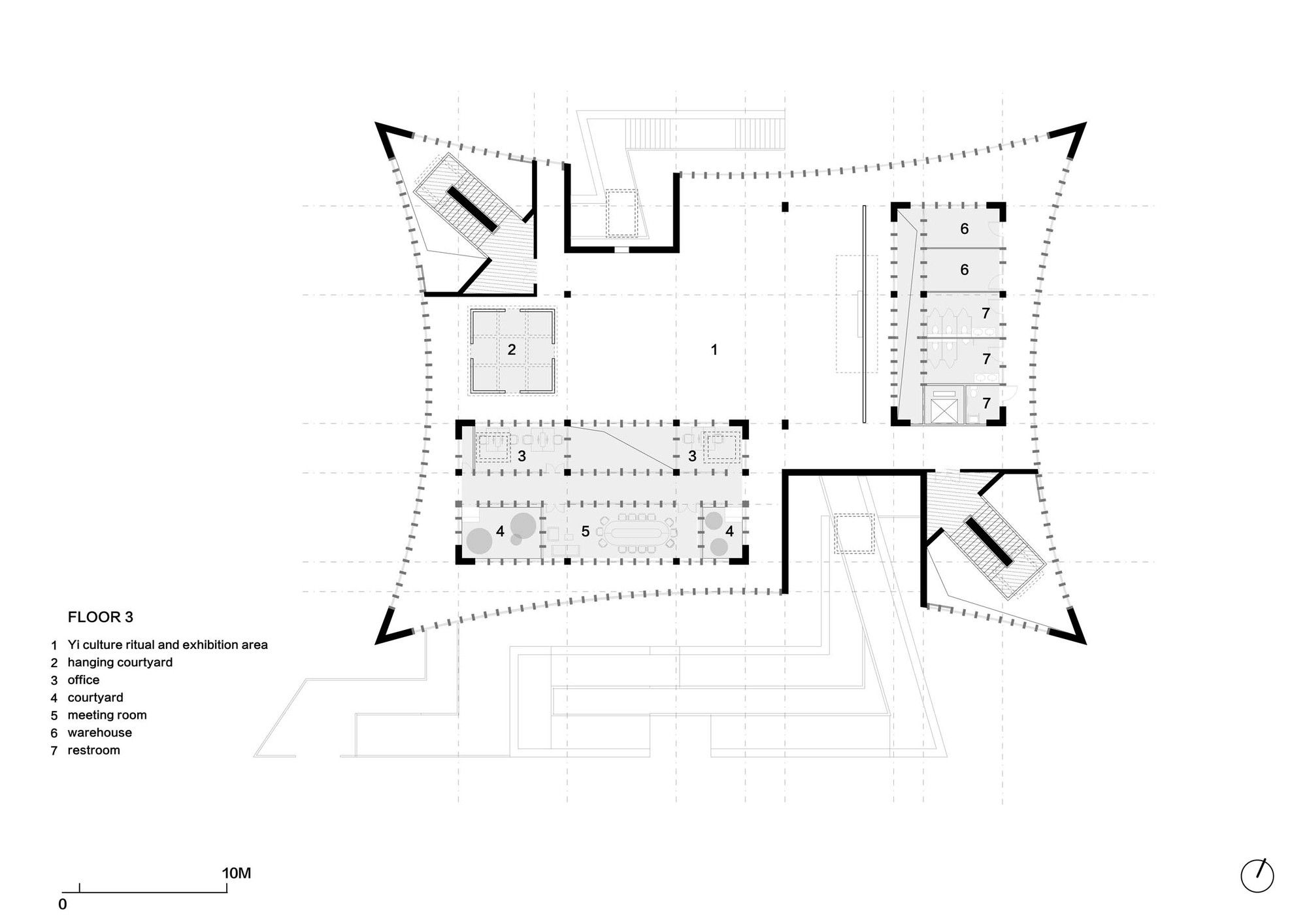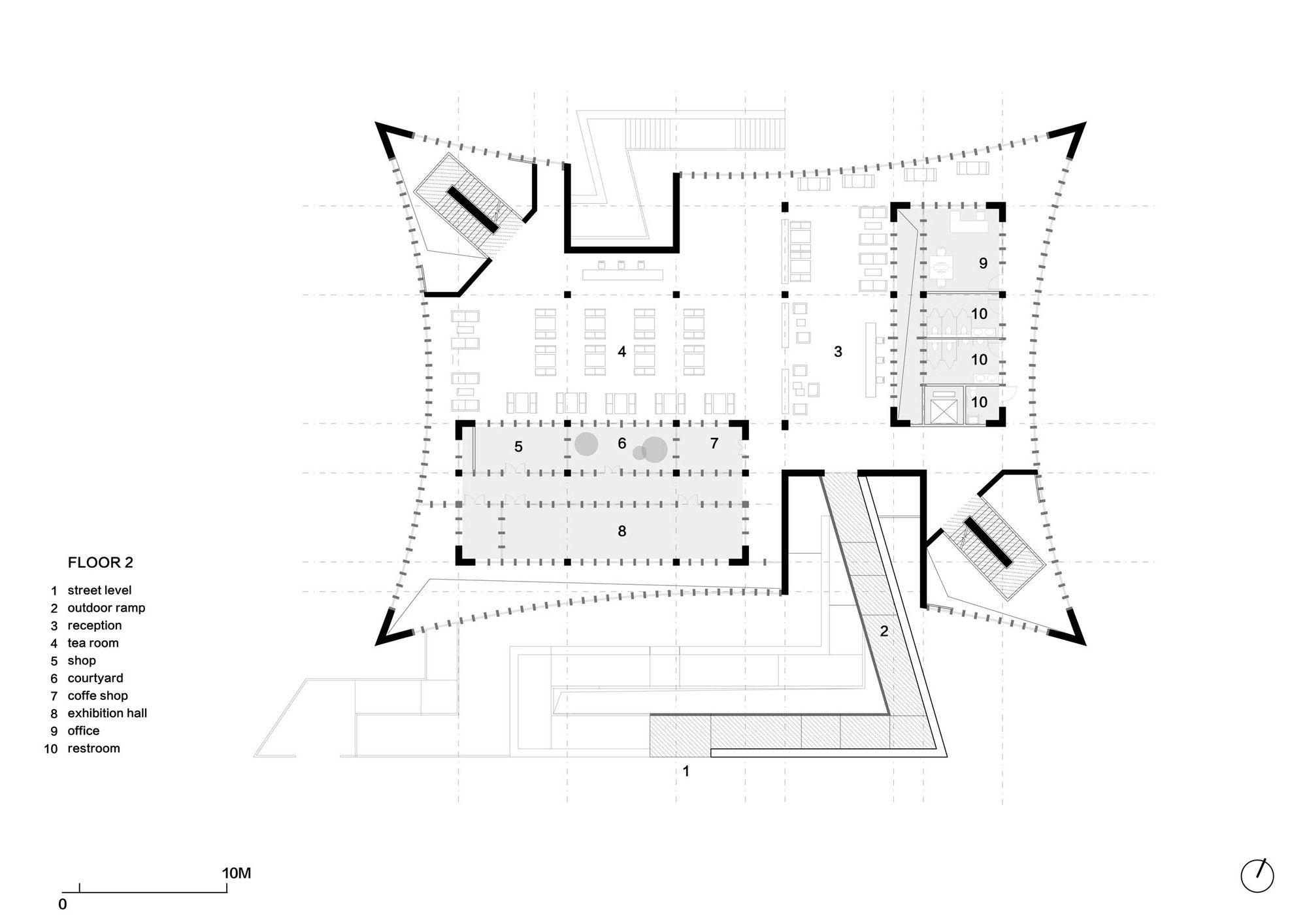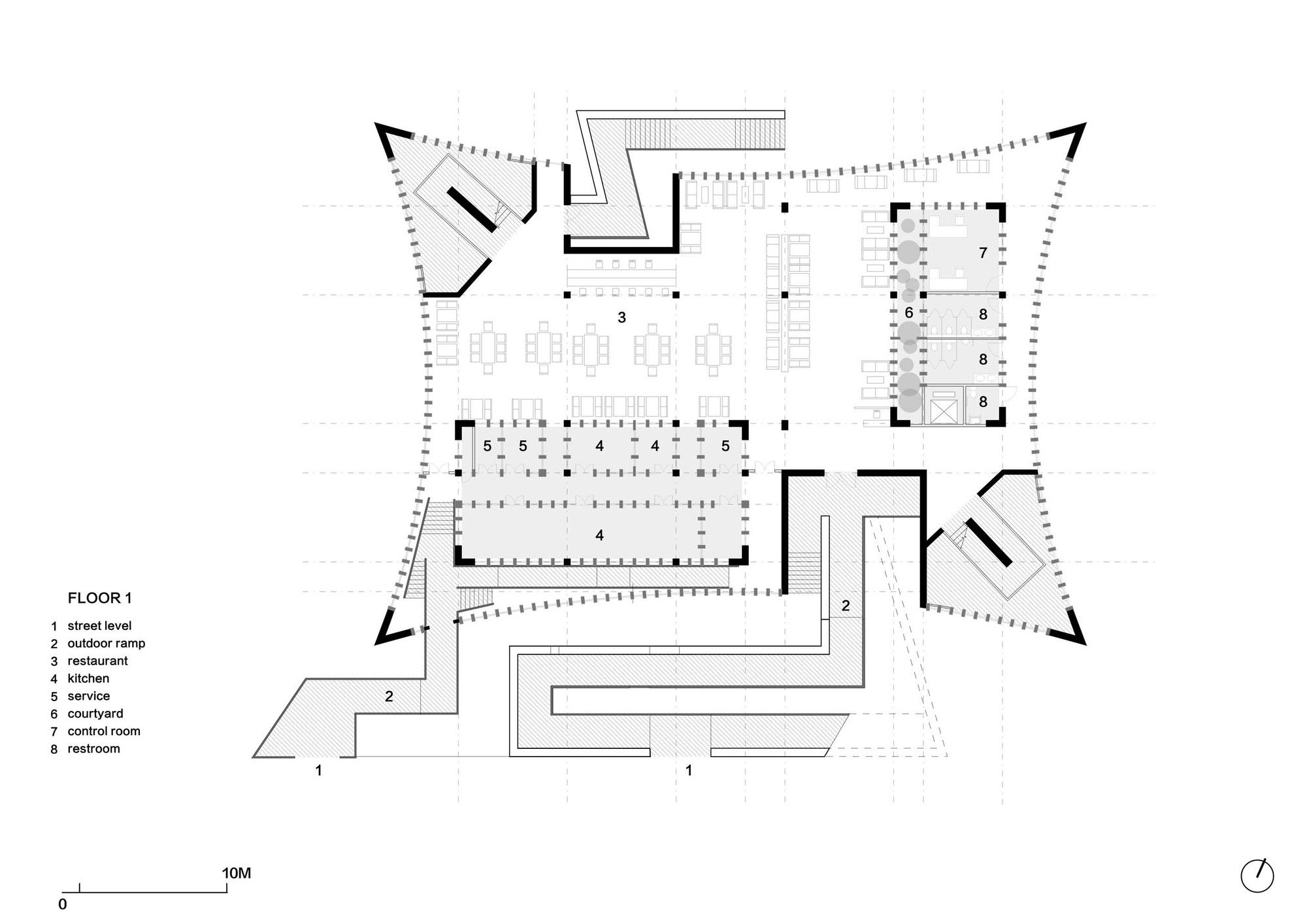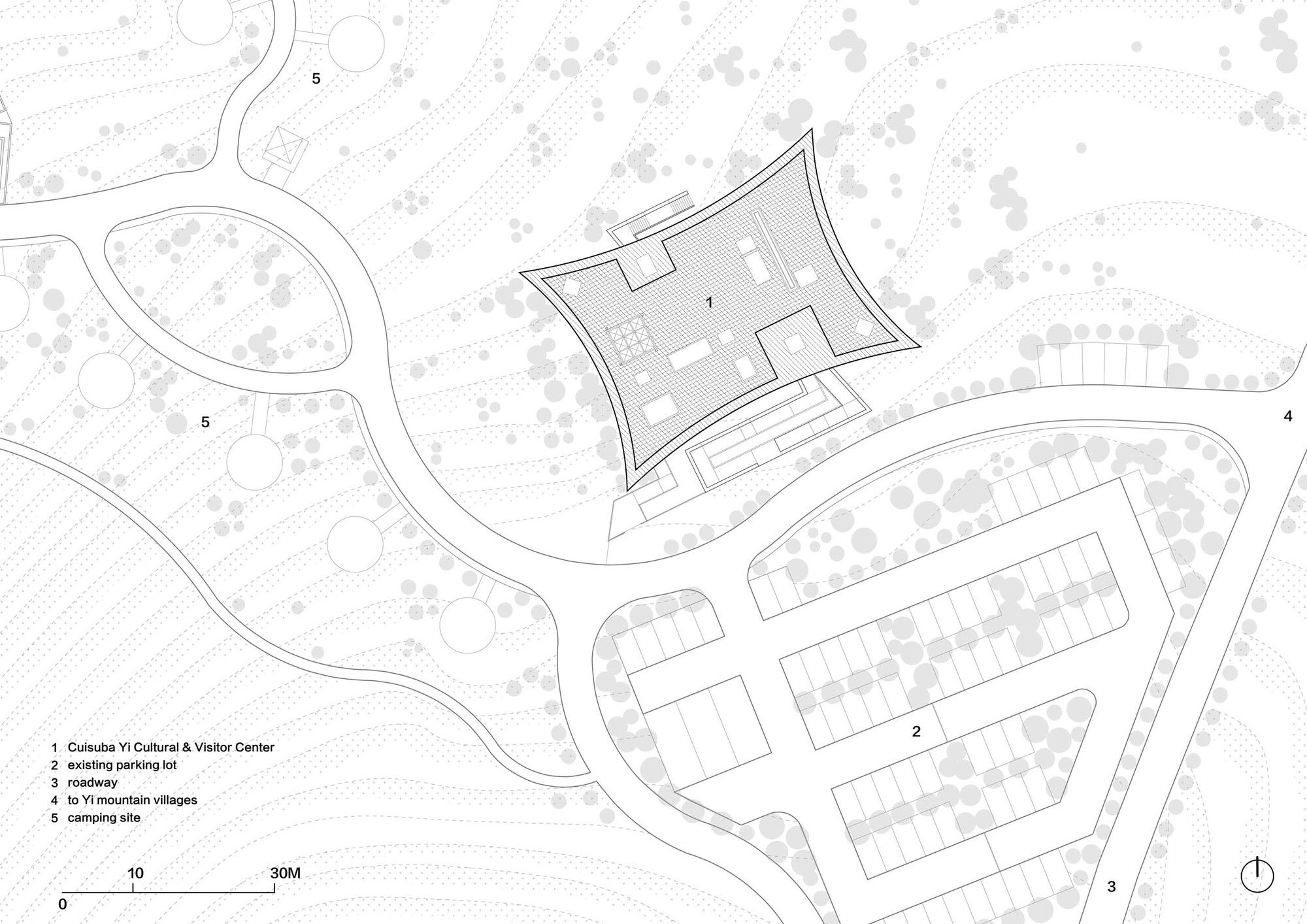Cuisuba Yi Cultural & Visitor Center
On a northwestern Guizhou typical plateau, placed at an altitude of above 2,000 meters in-between untouched grassland hills and mountains, stands the Cuisuba Yi Cultural & Visitor Center. Completed in March 2021, the center was conceived as a landmark to pay homage to the Yi people, an ethnic minority group mainly residing in the mountainous regions and rural areas of South-West China. The building grows from a slope with a maximum inclination of 20 degrees, surrounded by mountains all around.
Commissioned by the Dafang County Tourism Development Office in order to provide the basic structure to promote tourism in the area, the center aims to become a symbolic landmark celebrating Yi culture.
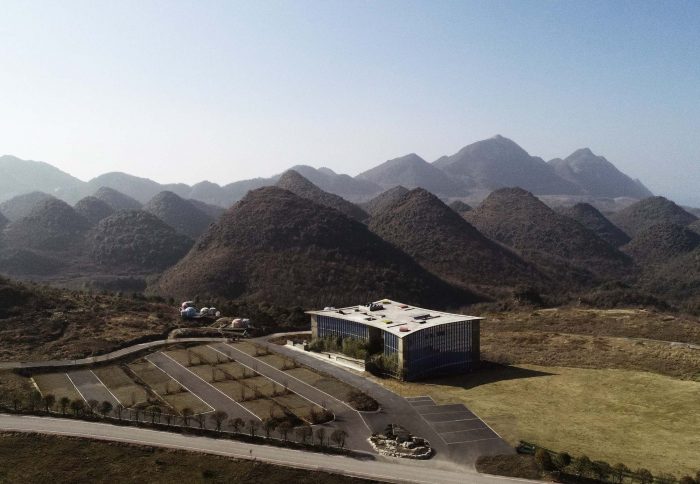
Photography by © Jingsong Xie
West-line Studio has a long history in building cultural centers in Guizhou province influenced by local ethnic minorities; the practice’s approach has always been characterized by a deep research on the peculiar cultural aspects of a particular community, which can result in rites, fabrics, patterns, construction techniques, festivals, and pictograms, in order to bring some of these unique features into the design, creating a strong bond with local culture and collective memory.
For thousands of years, the Yi people have been considering the plateau a sacred place where to worship heaven and earth and celebrate the ‘Torch Festival’, one of their main holidays. The festival commemorates a famous Yi wrestler who used pine tree torches to stop a locusts’ plague. Symbolism has always played a significant role in West-line Studio’s work, and in this cultural center, the connection with Yi’s ancient culture appears through many layers. First of all the building mass resembles the traditional Yi sacrificial altar, where sacrifices refer to offers.
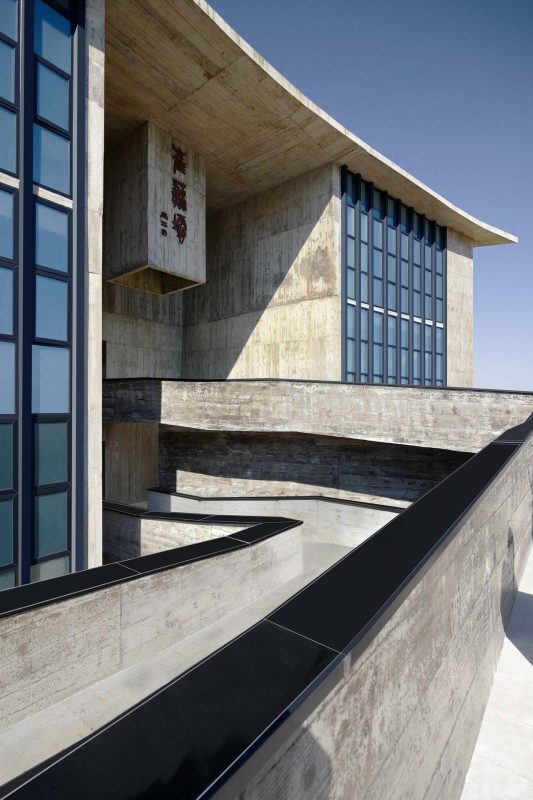
Photography by © Jingsong Xie
The building, in its simple volume, is characterized by an iconic roof consisting of a concave arc. This architectural gesture aims to show a response to the tension of nature, and again refers to Yi sacrificial symbols. The roof establishes a dialogue with the sky through the skylight system and the concave shape works as a rainwater collector. Via the gutter system the water vertically flows through the outdoor courtyards, creating a vertical connection of light and rain throughout the building, while solving the internal lighting and ventilation. Another important feature is the outdoor concrete ramps, which with their folding and undulating movement evoke the ascension procession over to hills during the ‘Torch Festival’.
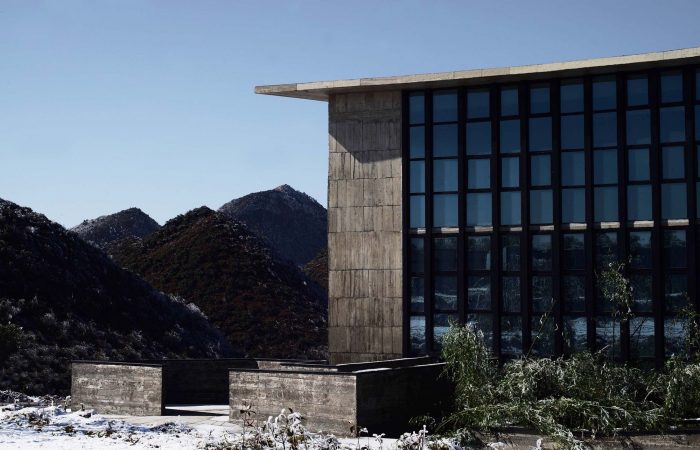
Photography by © Jingsong Xie
The construction system is based on concrete technology mixed with local sand. The sand mixture helps engrave the wooden texture given by the formworks, realized with recycled panels from declining Yi houses and local pine wood. The rough concrete interiors together with the black metal window frames and ceiling help frame the outdoor landscape, making it the protagonist of the interior atmosphere. The three floors are characterized by a free plan where two structural units combine all the main service functions; this spatial production mode derives from the so-called ‘group technology,’ typical of Guizhou mountain villages.
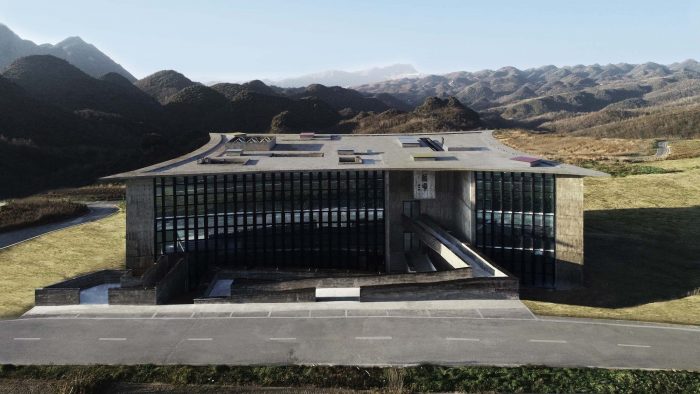
Photography by © Jingsong Xie
The indoor hanging courtyard, with its red and yellow skylights, creates a holy atmosphere and a sense of ritual space from the contrast between the colored lights and dark space below. The indoor atmosphere is kept dark on purpose so the outdoor bright scenery can stand out; visitors become silent wanderers of the wild grassland and are immersed in a suspended time as gazers of history.
The spatial indoor layout combines the ritual mnemonic structure with a more contemporary functional system. Yi Cultural Center aims to become a wordless monument that stands alone resembling Yi culture through symbolism and in creating a ritual atmosphere.
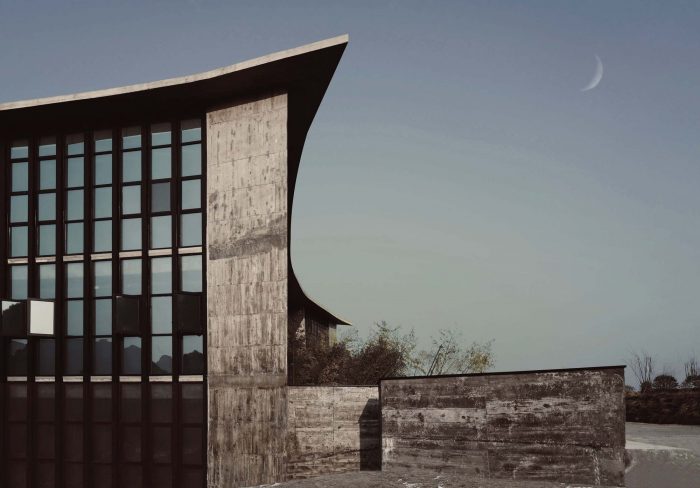
Photography by © Jingsong Xie
Project Info:
Architects: West-line studio
Location: Guizhou, China
Area: 2569 m²
Project Year: 2021
Photographs: Jingsong Xie, Haobo Wei
Manufacturers: Chongqing Yuancheng Aluminum Industry Co. Ltd, Chuanyao Glass Co., Ltd, Hubei Multicolor Redstone Industry Co. Ltd
Photography by © Jingsong Xie
Photography by © Jingsong Xie
Photography by © Jingsong Xie
Photography by © Jingsong Xie
Photography by © Jingsong Xie
Photography by © Jingsong Xie
Photography by © Jingsong Xie
Photography by © Jingsong Xie
Photography by © Jingsong Xie
Photography by © Jingsong Xie
Photography by © Jingsong Xie
Photography by © Jingsong Xie
Photography by © Jingsong Xie
Photography by © Jingsong Xie
Photography by © Jingsong Xie
Photography by © Jingsong Xie
Photography by © Jingsong Xie
Photography by © Jingsong Xie
Photography by © Jingsong Xie
Photography by © Jingsong Xie
Photography by © Jingsong Xie
Photography by © Jingsong Xie
Photography by © Jingsong Xie
Photography by © Jingsong Xie
Photography by © Jingsong Xie
Photography by © Jingsong Xie
Photography by © Jingsong Xie
Photography by © Jingsong Xie
Photography by © Jingsong Xie
Photography by © Jingsong Xie
Photography by © Jingsong Xie
Photography by © Jingsong Xie


